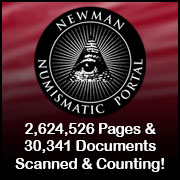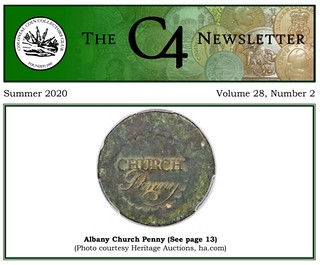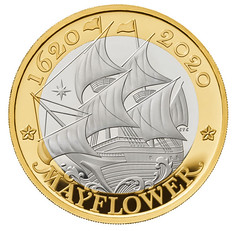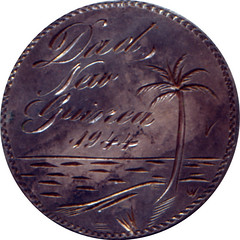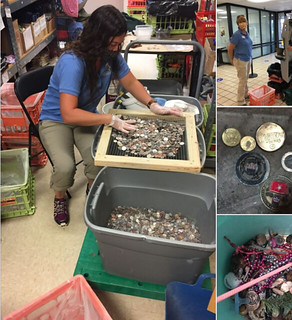
About UsThe Numismatic Bibliomania Society is a non-profit association devoted to the study and enjoyment of numismatic literature. For more information please see our web site at coinbooks.org SubscriptionsThose wishing to become new E-Sylum subscribers (or wishing to Unsubscribe) can go to the following web page link MembershipThere is a membership application available on the web site Membership Application To join, print the application and return it with your check to the address printed on the application. Print/Digital membership is $40 to addresses in the U.S., and $60 elsewhere. A digital-only membership is available for $25. For those without web access, write to: Charles Heck, Treasurer AsylumFor Asylum mailing address changes and other membership questions, contact Chuck at this email address: treasurer@coinbooks.org SubmissionsTo submit items for publication in The E-Sylum, write to the Editor at this address: whomren@gmail.com
BUY THE BOOK BEFORE THE COINSale Calendar
|
- WAYNE'S WORDS: THE E-SYLUM AUGUST 16, 2020
- NUMISMATIC BIBLIOMANIA SOCIETY ANNUAL MEETING
- NEWMAN PORTAL SYMPOSIUM ANNOUNCES SCHEDULE
- D. BRENT POGUE NUMISMATIC LIBRARY SALE RESULTS
- NEW BOOK: THE ARCHAEOLOGIST'S LABORATORY
- NEW BOOK: STUFF AND MONEY
- NEW BOOK: MONEY FOR NOTHING
- PERIODICAL: C4 NEWSLETTER SUMMER 2020
- PERIODICAL: SPINK INSIDER SPRING 2020
- DONALD G. PARTRICK (1926-2020)
- MINT CORRESPONDENCE TRANSCRIPTIONS ON NNP
- VIDEO: WILLIAM & ELIZABETH WISSLEAD
- NOTES FROM E-SYLUM READERS: AUGUST 16, 2020
- WHITMAN COIN FOLDERS AS COLLECTIBLE ITEMS
- WHITMAN NOVEMBER 2020 EXPO IS MOVING
- VOCABULARY TERM: MODELING CLAY
- WILLIAM REINHARDT ELLIOTT (1889-1976)
- HARVEY STACK'S NUMISMATIC FAMILY, PART 76
- CHRISTA MCAULIFFE COIN DESIGN
- DONALD G. PARTRICK COLLECTION SALES ANNOUNCED
- HARRY LAIBSTAIN LESHER DOLLAR OFFERING
- NUMISMAGRAM MEDAL SELECTIONS: AUGUST 2020
- HOLABIRD AUGUST 2020 SALE SELECTIONS
- NUMISMATIC NUGGETS: AUGUST 16, 2020
- PHOTOREALISTIC PORTRAITS OF ROMAN EMPERORS
- 14TH CENTURY COIN HOARD FOUND IN CZECH REPUBLIC
- FACING BUSTS: ENGLISH KINGS FROM 1351 TO 1526
- THE STRAWBERRY LEAF CENT NUMISMATIC FISTFIGHT
- HURRICANE DIANE AND THE 1955 DOUBLED DIE CENT
- WWII AUSTRALIAN COIN TRENCH ART
- A COUNTERFEIT 1964 KENNEDY HALF DOLLAR
- AQUARIUM RAKES IN 14 YEARS WORTH OF COINS
- LOOSE CHANGE: AUGUST 16, 2020
Click here to access the complete archive
Click here to unsubscribe (scroll down)
To comment or submit articles, reply to whomren@gmail.com
Content presented in The E-Sylum is not necessarily researched or independently fact-checked, and views expressed do not necessarily represent those of the Numismatic Bibliomania Society.
WAYNE'S WORDS: THE E-SYLUM AUGUST 16, 2020
 New subscribers this week include:
Jesse Kraft,
David N., and
Rebecca Spang.
Welcome aboard! We now have 6,545 subscribers.
New subscribers this week include:
Jesse Kraft,
David N., and
Rebecca Spang.
Welcome aboard! We now have 6,545 subscribers.
Thank you for reading The E-Sylum. If you enjoy it, please send me the email addresses of friends you think may enjoy it as well and I'll send them a subscription. Contact me at whomren@gmail.com anytime regarding your subscription, or questions, comments or suggestions about our content.
FUN FACT: According to the Wall Street Journal (which found this in her book), presumptive Vice President candidate Kamala Harris once worked as a tour guide at the Bureau of Engraving and Printing.
This week we open with updates from NBS, Pogue Library sale results, three new books, two periodicals, updates from the Newman Numismatic Portal, and more.
Other topics this week include Donald Groves Partrick, Bill and Elizabeth Wisslead, the Whitman Expo, modeling clay, Lesher dollars, Roman Emperors, English Kings, the strawberry leaf and 1955 doubled die cents, and Australian coin trench art.
To learn more about The Fantastic 1804 Dollar, Money Artist J.S.G. Boggs, the Archaeologist's Laboratory, assignats, David R. Sear, Matte Proof cents, the 1979 silver boom, the New York-style Brasher Doubloon, and numismatic fisticuffs, read on. Have a great week, everyone!
Wayne Homren
Editor, The E-Sylum
NUMISMATIC BIBLIOMANIA SOCIETY ANNUAL MEETING
First a word from our sponsor, the Numismatic Bibliomania Society. We have many new readers who may not realize that while The E-Sylum is free to all, the club offers a great members-only journal available in print form or for a less expensive electronic-only membership. See our website, linked below, for more information and a sample issue.
Also, NBS ordinarily holds its annual membership meeting at the American Numismatic Association's World's Fair of Money convention. With that cancelled this year due to the coronavirus pandemic, the event is moving online. Here's the announcement. -Editor
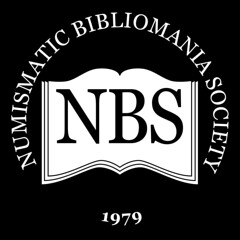 The NBS annual meeting will be held on Friday, August 28 at 11AM. This event will be online, Zoom-based, and is part of the NNP Symposium overall schedule. Attendees should register at the link below, and will receive the Zoom address shortly before the NBS meeting. This meeting will include our annual awards presentation, in addition to our featured speaker, Lianna Spurrier, who will present on the topic of taking a book from manuscript to printed publication.
The NBS annual meeting will be held on Friday, August 28 at 11AM. This event will be online, Zoom-based, and is part of the NNP Symposium overall schedule. Attendees should register at the link below, and will receive the Zoom address shortly before the NBS meeting. This meeting will include our annual awards presentation, in addition to our featured speaker, Lianna Spurrier, who will present on the topic of taking a book from manuscript to printed publication.
Note, our annual fundraiser auction, which is typically part of the annual meeting, will be administered separately this year, as a mail bid sale, by David and Maria Fanning. The catalog for this event will be issued on or about August 21st, with the sale closing on August 31. We thank all those who have contributed material to this event.
NBS President Tom Harrison adds:
"The meeting will include the presentation of The Asylum awards. Please watch your inbox in the coming week for a copy of our benefit mail bid auction. Since NBS dues do not cover the production cost of The Asylum, our benefit auction is critical to the financial health of the NBS. We sincerely thank David, Maria, our generous donors and enthusiastic bidders for their steadfast support."
Link to NNP Symposium registration:
https://nnpsymposium.org/register
For more information on the Numismatic Bibliomania Society, or to join, see:
https://www.coinbooks.org/
THE BOOK BAZARRE
NEWMAN PORTAL SYMPOSIUM ANNOUNCES SCHEDULE
Newman Numismatic Portal Project Coordinator Len Augsburger provided this reminder of the upcoming 2020 Newman Portal Symposium. Mark your calendars, and don't forget to register. -Editor
Newman Portal Symposium Announces Schedule
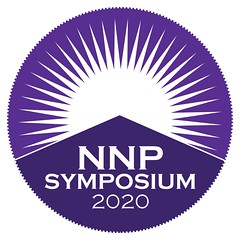 The NNP Symposium, August 28-30, is now scheduled and includes a number of presentations of interest to NBS members:
The NNP Symposium, August 28-30, is now scheduled and includes a number of presentations of interest to NBS members:
David Fanning will present at 10AM (all times Eastern) on August 29 on “Ancient Coins in Early American Auctions.” Fanning has examined nearly every 19th century American auction catalog and analyzed each for ancient numismatic content, with special attention focused on plated catalogs. This will appeal to both ancient and American collectors, as Fanning uses the vector of ancient numismatics to learn more about American coin dealers during this period.
The NBS annual meeting is at 11AM on Friday, August 28. Attendees should register at the link below.
Joel Orosz and Len Augsburger will present at 5PM, August 29 on the first edition of Eric Newman and Ken Bressett’s The Fantastic 1804 Dollar. Whitman printed a limited number of copies of this book prior to the discovery of the King of Siam set, which was announced by David Spink and James Risk at the 1962 ANA Convention. Ken Bressett issued the famous “stop the presses” phone call as a result, but not before a few copies - destined to become collector’s items - were printed.
Our own Wayne Homren will speak at 3PM on Sunday, August 30 on J.S.G. Boggs, best described as a performance artist who created reproductions of legal tender in exchange for goods and services. Homren collects Boggs pieces and will provide a fascinating view of this so-called counterfeiter.
Link to NNP Symposium overall schedule:
https://nnpsymposium.org/schedule
Link to NNP Symposium registration:
https://nnpsymposium.org/register

D. BRENT POGUE NUMISMATIC LIBRARY SALE RESULTS
This Stack's Bowers press release describes some results of their recent sale of the D. Brent Pogue numismatic library. -Editor
at the Stack’s Bowers Galleries August 2020 Auction
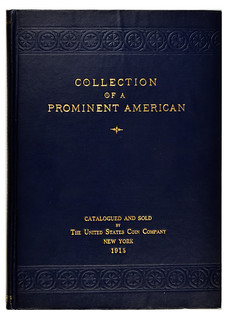
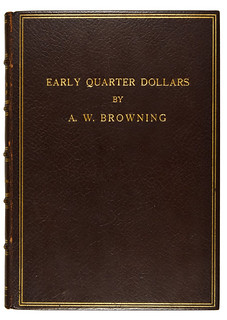
Historic numismatic literature and rare Spanish Colonial gold coinage from the D. Brent Pogue Collection realized over $592,000 last week in the Stack’s Bowers Galleries August 2020 Las Vegas Auction. This offering represents a departure from the United States coins and paper money from the Pogue Collection sold by Stack’s Bowers Galleries from May 2015 through March 2020, and showcases the collector’s eye for quality across a range of categories. Total prices realized for the D. Brent Pogue Collection now exceed $131,980,000, reaffirming its status as the most valuable numismatic collection ever sold.
While his library of numismatic literature was a peripheral focus, D. Brent Pogue was serious about acquiring important references and might well have assembled one of the great American libraries had he been able to continue the pursuit. Numbering more than 100 lots, the works included in the Stack’s Bowers Galleries sale ranged from an elusive 17th-century reference on medallic issues of 1500-1600 to more personal volumes presented and inscribed to him by Q. David Bowers over the years.
In between these bookends were many important works, from desirable plated Chapman sales to extremely rare references. The highest priced lot among the literature was Louis E. Eliasberg’s personal Green’s Checklist offered in lot 2036. This incredible accounting of the formation of this famous American collection in Eliasberg’s own hand brought $28,800. Lot 2027 featured one of five deluxe presentation copies of A.W. Browning’s work on early quarters, which realized $26,400. A beautifully matched leather-bound set of The Numismatist also drew considerable excitement in lot 2014. Containing every issue from the rare original first six volumes through Volume 65, it earned $26,400.
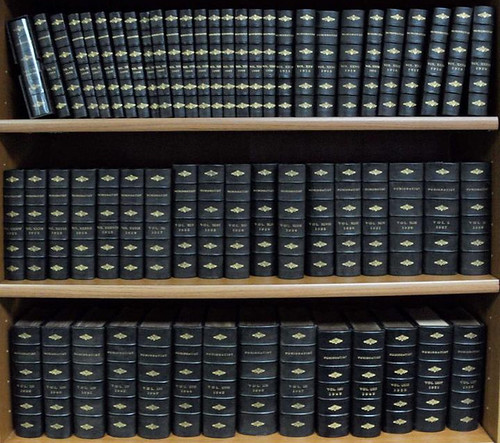
Lot 2014: The Numismatist
A highlight among the auction catalogs in the sale was a magnificent leather-bound and plated volume containing the first four large-format Chapman sales, including the Bushnell, Warner, Cleneay, and Winsor sales. It brought $6,600 in lot 2060.
Featured among the World coinage in the sale were magnificent examples of the Spanish Colonial Royal presentation gold coinage from the D. Brent Pogue Collection. The exceedingly rare Royal presentation issues struck at mints in Bolivia, Peru, and Mexico were a distinct departure from the normal “cob” coinage that was standard during the first few centuries of Spanish Colonial rule in the New World. The Royal presentation issues were manufactured with obvious care, and it is clear that each planchet was hand-selected for excellent quality and struck using special dies that featured subtle differences. Overall, the high degree of craftsmanship employed in the manufacturing process for these issues was unparalleled in the New World.
The Stack’s Bowers Galleries August 2020 Las Vegas Auction featured two of these exceptional and intricately produced coins. Offered in lot 21445 was an MS-66 (PCGS) 1714 8 Escudos that was considered to be the finest known by respected numismatist and former owner Don Canaparo. Plated in The Standard Catalog of Mexican Coins by Krause Publications, it brought $312,000. It was accompanied by an MS-65 (PCGS) 1711 4 Escudos that was one of just three specimens to appear at auction over the past two decades. As the only example graded by PCGS, it earned $84,000 in lot 21446.
To read the earlier E-Sylum article, see:
THE D. BRENT POGUE NUMISMATIC LIBRARY
(https://www.coinbooks.org/v23/esylum_v23n27a02.html)
NEW BOOK: THE ARCHAEOLOGIST'S LABORATORY
Ted Banning has published an updated edition of his textbook The Archaeologist's Laboratory, incorporating additional numismatic material to educate students. Here's the information from the publisher's site. Ted kindly forwarded additional images. -Editor
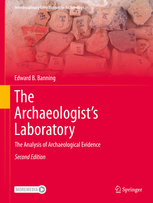 This second edition of the classic textbook, The Archaeologist’s Laboratory, is a substantially revised work that offers updated information on the archaeological work that follows fieldwork, such as the processing and analysis of artifacts and other evidence. An overarching theme of this edition is the quality and validity of archaeological arguments and the data we use to support them. The book introduces many of the laboratory activities that archaeologists carry out and the ways we can present research results, including graphs and artifact illustrations.
This second edition of the classic textbook, The Archaeologist’s Laboratory, is a substantially revised work that offers updated information on the archaeological work that follows fieldwork, such as the processing and analysis of artifacts and other evidence. An overarching theme of this edition is the quality and validity of archaeological arguments and the data we use to support them. The book introduces many of the laboratory activities that archaeologists carry out and the ways we can present research results, including graphs and artifact illustrations.
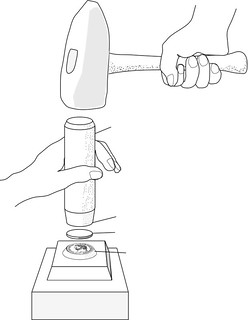 Part I introduces general topics concerning measurement error, data quality, research design, typology, probability and databases. It also includes data presentation, basic artifact conservation, and laboratory safety. Part II offers brief surveys of the analysis of lithics and ground stone, pottery, metal artifacts, bone and shell artifacts, animal and plant remains, and sediments, as well as dating by stratigraphy, seriation and chronometric methods. It concludes with a chapter on archaeological illustration and publication.
Part I introduces general topics concerning measurement error, data quality, research design, typology, probability and databases. It also includes data presentation, basic artifact conservation, and laboratory safety. Part II offers brief surveys of the analysis of lithics and ground stone, pottery, metal artifacts, bone and shell artifacts, animal and plant remains, and sediments, as well as dating by stratigraphy, seriation and chronometric methods. It concludes with a chapter on archaeological illustration and publication.
A new feature of the book is illustration of concepts through case studies from around the world and from the Palaeolithic to historical archaeology.The text is appropriate for senior undergraduate students and will also serve as a useful reference for graduate students and professional archaeologists.
About the Author
Ted Banning is a Canadian archaeologist and professor of Anthropology at University of Toronto. His research focuses on the Neolithic of the Near East, but his other interests include the theory and methods of archaeological survey and landscape archaeology, the spatial organization of ancient built environments, and the spatial and statistical analysis of microrefuse —tiny fragments of lithics, pottery, ground stone, shell, bone, and other materials in archaeological sediments. For more than three decades, he has directed field projects in northern Jordan, and previously served on the staff of excavations at the Pre-Pottery Neolithic site of ‘Ain Ghazal, Jordan, at Tell al-Maskhuta, Egypt, and on surveys in southern Jordan and northeastern Egypt. He also has side interests in historical archaeology and numismatics, and especially the early history of numismatists and antiquarians in Canada. He is author of Archaeological Survey (Springer 2002), a member of the Society of American Archaeology and American Institute of Archaeology, and Fellow of the Society of Antiquaries of London.
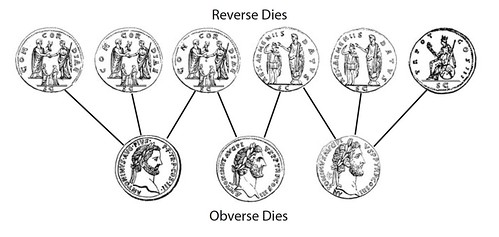
Ted adds:
"The second edition has some numismatic angles in a couple of the chapters. Chapter 13, on metal artifacts, has a description of how ancient and mediaeval coins were struck, a case study on Neolithic copper beads from Switzerland that are probably a form of primitive money, and case studies on the spatial distributions of Gallic coins in England and Roman coins in the western Empire. There are also brief descriptions of hoard analysis, sourcing early Greek silver coins by their lead isotopes, and the identification of the denominations in Greek coins by periodicity in their weight distributions.
Chapter 18, on seriation (a method for ordering artifacts in time), outlines the origins of this method in early numismatics and has a brief section on die linking. These are new to this edition. The old 2000 edition had no chapter on metal artifacts and the seriation chapter didn't include die linking."
For more information, or to order, see:
https://www.springer.com/gp/book/9783030479909
(https://www.springer.com/gp/book/9783030479909)
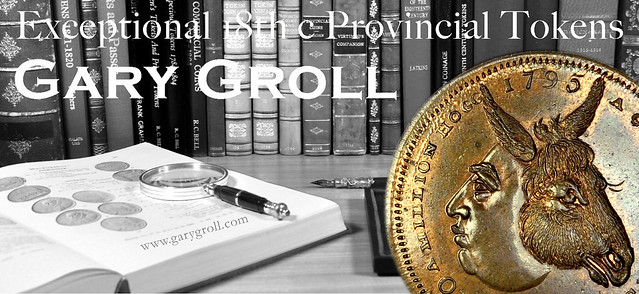
NEW BOOK: STUFF AND MONEY
New subscriber Rebecca L. Spang published a book in 2015 that we missed at the time (the paperback came out in 2017). Spang is Professor of History and Director of the Center for Eighteenth-Century Studies at Indiana University. Here's the description from the publisher's website, Harvard University Press. -Editor
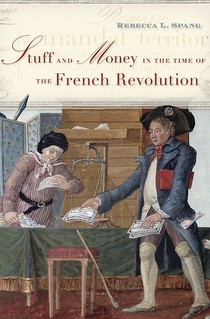 Rebecca L. Spang, who revolutionized our understanding of the restaurant, has written a new history of money. It uses one of the most infamous examples of monetary innovation, the assignats—a currency initially defined by French revolutionaries as “circulating land”—to demonstrate that money is as much a social and political mediator as it is an economic instrument. Following the assignats from creation to abandonment, Spang shows them to be subject to the same slippages between policies and practice, intentions and outcomes, as other human inventions.
Rebecca L. Spang, who revolutionized our understanding of the restaurant, has written a new history of money. It uses one of the most infamous examples of monetary innovation, the assignats—a currency initially defined by French revolutionaries as “circulating land”—to demonstrate that money is as much a social and political mediator as it is an economic instrument. Following the assignats from creation to abandonment, Spang shows them to be subject to the same slippages between policies and practice, intentions and outcomes, as other human inventions.
But Spang’s book is also a new history of the French Revolution, one in which radicalization was driven by an ever-widening gap between political ideals and the realities of daily life. Money played a critical role in creating this gulf. Wed to the idea that liberty required economic deregulation as well as political freedom, revolutionary legislators extended the notion of free trade to include “freedom of money.” The consequences were disastrous. Backed neither by the weight of tradition nor by the state that issued them, the assignats could not be a functioning currency. Ever reluctant to interfere in the workings of the market, lawmakers thought changes to the material form of the assignats should suffice to enhance their credibility. Their hopes were disappointed, and the Revolution spiraled out of control.
Stuff and Money in the Time of the French Revolution restores economics, in the broadest sense, to its rightful place at the heart of the Revolution and hence to that of modern politics.
For more information, or to order, see:
Stuff and Money in the Time of the French Revolution
(https://www.hup.harvard.edu/catalog.php?isbn=9780674975422&content=reviews)
Here's a review by Patrice Higonnet from The Times Literary Supplement. -Editor
As Rebecca Spang explains, in the Marxist interpretation of the course of the French Revolution, Paris artisans with a social grievance teamed up with ideologized left-bourgeois Jacobins against rightbourgeois Girondins in 1793, forming Robespierre’s “Mountain”. However, the Mountain’s “desire for power and the working-class hunger for bread were made to coincide only briefly and through force”. In the 1980s, new interpretations emerged. Revisionists argued that the plebs did indeed despise the vocabulary of commerce and economic individualism. But they also insisted that the not-really-bourgeois deputies like Robespierre disdained it too. Thus all ideological roads led to the guillotine.
In Stuff and Money in the Time of the French Revolution, Spang disagrees categorically with both views. For her, the issues surrounding Revolutionary paper money, or assignats, were neither simply social nor ideological. They were simultaneously social and political. In fact, the assignat, she deftly shows, was meant to be both state-sponsored, i.e. national, and natural, i.e. worth something that was very real. Indeed, in 1790–91, the bourgeois revolutionaries often argued that the assignats were not a paper money at all because the new elegantly engraved notes would be a kind of short-term interest-yielding government bond. Citizens would use these “notes” to buy confiscated Church land; and the notes would then be burnt. Not paper money, then, but a kind of Quantitative Easing which would affect neither wages nor price. For Spang, these “notes” changed everything: “the prostitute whose client had only large-denomination assignats [and] the beggar surprised to receive paper alms” had to think again. As did everyone else: in these moments of socio-political intercourse, neither class war nor Rousseau’s general will was really on anybody’s mind. Food in Paris was always plentiful: the problem was that peasants, landlords and shopkeepers gradually refused to trade food for paper money. Context or “stuff” was the key, as in the “stuff” of Prospero’s dreams. For a while, all was well. Jacobins assumed that the discourse of “commerce” and “civic virtue” were compatible. But in the end, between 9th Thermidor (July 27, 1794) and their demonetization in February 1796, the assignats inexorably lost all of their remaining value.
This is a quite brilliant, assertive book. For Spang, all historians (“pace Furet” and “pace Soboul”) were wrong, as are – or were – culturally blind, apolitical economists; all Jacobins; some prostitutes and beggars, and, also, Edmund Burke, who explained in 1791 that “the utter destruction of assignats, and . . . the restoration of order, are one”. Restoring ancient world orders, as we know, usually doesn’t work.
To read the complete article, see:
Commerce and economic individualism in the French Revolution
(https://www.the-tls.co.uk/articles/history-in-brief-410/)
NEW BOOK: MONEY FOR NOTHING
Another new book on the creation and nature of money was reviewed in the Wall Street Journal this week. Here's an excerpt. -Editor
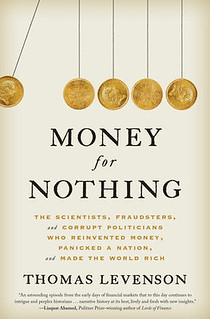 Without quite intending to, scientific geniuses invented the mathematical protocols of contemporary finance more than 300 years ago. If they could see us now, with our profusion of dollars and debts and derivatives, would they dream them up all over again?
Without quite intending to, scientific geniuses invented the mathematical protocols of contemporary finance more than 300 years ago. If they could see us now, with our profusion of dollars and debts and derivatives, would they dream them up all over again?
Yes indeed, suggests Thomas Levenson, author of the aptly titled “Money for Nothing.” Though it was war that led to the founding of the Bank of England, and avarice (and bribery, too) that drove the South Sea Co. forward, the unlovely back stories, Mr. Levenson says, can’t efface the contributions of these financial experiments to the progress of the world.
Mr. Levenson, a professor of science writing at the Massachusetts Institute of Technology, interweaves the story of the rise of mathematics and astronomy with the rise of bankers and actuaries and stock promoters. He traces the evolution of the idea of money to the habits of mind that brought us calculus and the art of surveying and the theories of gravity and optics. And he frames this vivid narrative around the century-long wars between France and Britain that culminated in the Battle of Waterloo in 1815.
Opening with sketches of the lives and ideas of such luminaries as Isaac Newton and Edmond Halley (he of comet fame), Mr. Levenson pauses to describe the reform of the English coinage and to ponder the nature of money itself. This last topic could hardly be timelier now that the Federal Reserve is producing more money than even Newton, hyper-efficient warden of the Royal Mint in the late 1600s—and “perhaps the greatest genius in the history of the world,” by Mr. Levenson’s reckoning—was equipped to imagine.
Intellectual preliminaries out of the way, the author homes in on the rise and fall of the South Sea Co. and the parallel cross-channel boom and bust of the Mississippi Co. Each project started with an exciting new idea. Each commanded the imprimatur of the state. Each enriched some, enchanted many others and, finally, ruined almost as many as it had enriched. Each was a bubble, but each opened minds to the possibilities of financial invention.
Meanwhile, across the English Channel, the brilliant John Law, a Scotsman living in Paris who would teach the French the meaning of the word inflation, was doing the South Sea Co. one better. He, too, undertook to relieve the government of its burdensome debts by exchanging its IOUs for shares of stock, in this case, shares in Law’s very own “banque.” That ambition achieved, Law sold his Banque Générale to the French state. The notes of the renamed Banque Royale now circulated as legal tender. Better still, from Law’s vantage point, his scrip displaced gold and silver; 18th-century France, anticipating modern America, adopted a pure paper monetary standard.
But comeuppance followed swiftly, as the clouds of new bank notes created the inflation that collapsed the share price of the Mississippi Co. (so named for the monopoly that Law’s creation enjoyed in trading with France’s Louisiana Territory). The monetary magician presently took flight, “stuffed into a borrowed coach,” as Mr. Levenson puts it, without a sou in his pocket and fearing for his life.
Even so, Mr. Levenson contends, the fugitive from the consequences of money-printing made his constructive mark: “As deeply as any contemporary John Law both recognized and demonstrated that money didn’t have to be real. . . . Gold or silver did not possess some unique property that gave them significance—value—beyond what the market said it had.” Hence was born, in the author’s telling, the volatile but indispensable “mathematics of credit” by which we live now.
To read the complete article, see:
‘Money for Nothing’ Review: Boom and Bust and Progress
(https://www.wsj.com/articles/money-for-nothing-review-boom-and-bust-and-progress-11597188132)
For more information, or to order, see:
Money for Nothing
(https://www.penguinrandomhouse.com/books/251546/money-for-nothing-by-thomas-levenson/)

PERIODICAL: C4 NEWSLETTER SUMMER 2020
Editor Will Nipper has produced another great issue of the C4 Newsletter for the Colonial Coin Collectors Club. One needn't collect colonials to enjoy and learn from the great articles within. Here's the table of contents. -Editor
• President’s Corner
• C4 Election – Call for Nominations
• Letters to the Editor
• Money of Account at Newgate Prison
• Interview w/ Dr. Jesse Kraft, ANS Assistant Curator of American
Numismatics
• R-E-S-P-E-C-T: Thoughts on the Albany Church Penny
• Cast-ing Away Your Copper Doubts
• John Law Coppers 1719-1734: An Updated Census
• The (Counterfeit) Elephant in the Room
• Announcements
• Classified Ads
• Sponsor Ads
• Reciprocal Club Ads
An excerpt of Jeff Rock's Cast-ing Away Your Copper Doubts article will appear in next week's issue. -Editor
For more information about the Colonial Coin Collectors Club, or to join, see:
https://colonialcoins.org/
PERIODICAL: SPINK INSIDER SPRING 2020
The Spring 2020 issue of SPINK INSIDER has been published. This house organ naturally includes announcements and other information about the firm's upcoming sales, but there is also a lot of great numismatic research. Here's an excerpt from the table of contents. The complete issue is available to read online and bibliophiles can order a hardcopy. -Editor
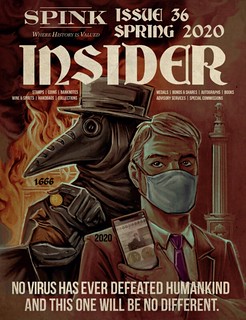 The Importance of Currency During the Indentureship System in Mauritius
The Importance of Currency During the Indentureship System in Mauritius
by Ghirish Bissoon
The Englishman Who Saved the Jacobites’ Gold
by Martyn Downer
An Interview with David R. Sear
by Olivia Marshall
Quarantines: From Plague and Cholera to Coronavirus Covid-19
by Guy Dutau
Life Cycle: A Global Ride To Fight Cancer (Around The South Pole)
by David Rose
The Story of Polymer Notes in the UK
by Jonathan Callaway
The Port Royal Earthquake of June 1692: An Eye-Witness Account
by Nick Startup
Rivalling Rome: Parthian Coins and Culture
by Vesta Sarkhosh Curtis and Alexandra Magub
A Brief History of the Shah Jahan Diamond
by Olivia Marshall
Social Distancing In 1666: Orders for the Prevention of the Plague
by Emma Howard
To read the complete issue, see:
SPINK INSIDER ISSUE 36 SPRING 2020
(https://storage.spink.com/source/Insider/Insider36.pdf)
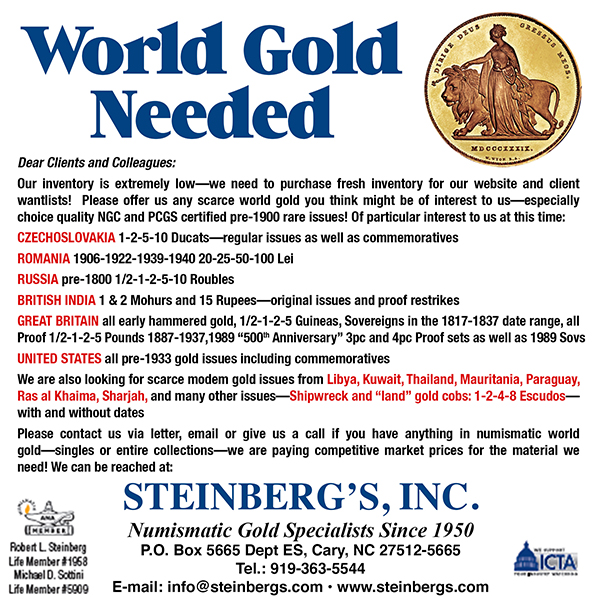
DONALD G. PARTRICK (1926-2020)
The American Numismatic Society writes:
"The American Numismatic Society mourns the loss of its former President and Chairman, Mr. Donald G. Partrick. His most generous support and leadership transformed the Society into the vibrant institution it is today. He will be forever one of the great leaders and collectors within the Society's distinguished history. At the request of Mr. Partrick's family, no further statements are being made at this point.”
Heritage is continuing sales of Partrick's collection - see the article elsewhere in this issue for more information on upcoming sales. In the absence of an obituary, here's a note from Pete Smith followed by an image from an earlier E-Sylum article. -Editor
Donald Groves Partrick was born on January 4, 1926. He was a real estate developer living in Huntington, New York.
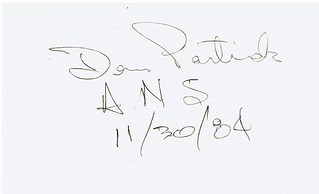 On November 30, 1984, he made a presentation at the first ANS Coinage of the
Americas Conference. I asked him to autograph a 4x6 index card as one of the speakers. This is the only personal interaction I ever had with him.
On November 30, 1984, he made a presentation at the first ANS Coinage of the
Americas Conference. I asked him to autograph a 4x6 index card as one of the speakers. This is the only personal interaction I ever had with him.
When I learned of his passing I noted there was no listing for him in my book American Numismatic Biographies. It was not that I thought he was unworthy, but I had never come across biographical information about him.
I looked for an obituary or death notice and found none. I checked local funeral homes for a funeral notice and found none. There was no mention of his death in numismatic publications.
Partrick was a generous supporter of the American Numismatic Society, an active participant at ANS events and served as their president. It was the ANS that finally made the public announcement of his death. The absence of a death notice is not the result of an oversight, absence of close family or financial hardship. Perhaps in this case the lack of a story becomes as interesting as the story would be.
Thanks, Pete. Partrick was a very private person. His family is continuing that practice, so little is known about him today. His work with ANS and his collection itself are his primary legacy to the hobby. We'll look forward to future sales. -Editor
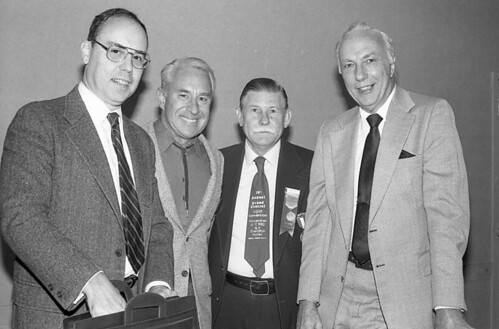
Richard Margolis, Donald Partrick, Vincent Alones, John J. Ford at the 1986 Grand Central Coin Convention (Image courtesy George Cuhaj)
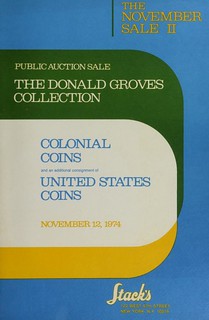 RIGHT: The Donald Groves sale by Stack's in November 1974.
The sale consisted of duplicates from the Donald Groves Partrick collection.
RIGHT: The Donald Groves sale by Stack's in November 1974.
The sale consisted of duplicates from the Donald Groves Partrick collection.
There are at least four articles or letters from Don Groves published in the C4 Newsletter from the Colonial Coin Collectors Club. In the Winter 1996 issue he congratulates Dan Friedus on his Higley Copper research and in another he congratulates John Kleeberg for his work on the Strawberry Cent (see another article in this issue for more on that coin). He also recounted a friendly bidding rivalry over Connecticut coppers with George Perkins, whose collection was sold by Stack's in February 2000. -Editor
For related reading on the Newman Numismatic Portal, see:
C4 Newsletter
(https://nnp.wustl.edu/library/publisherdetail/510357?Year=1996&displayAmt=50)
The Donald Groves Collection of Colonial Coins and an additional consignment of United States Coins
(https://nnp.wustl.edu/library/auctionlots?AucCoId=3&AuctionId=516501)
Americana: Colonial and Federal Coins, Medals and Currency, Featuring The George C. Perkins, Esq. Collection of Connecticut Coppers, Federal Currency Proofs and Essays
 To read a Coin World article suggested by Ray Williams:
To read a Coin World article suggested by Ray Williams:
Partrick’s patterns Anchor Heritage’s FUN Auction
(https://www.coinworld.com/news/precious-metals/donald-g-partrick-collection-heritage-auctions-fun-show-florida-numismatics-coin-world-collecting-hobby.html)
To view all of The Partrick Collection Part I, see:
https://coins.ha.com/c/search-results.zx?N=3183+790+231+4294953659+4294953388
To read earlier E-Sylum articles, see:
HERITAGE TO OFFER DON PARTRICK COLONIAL COLLECTION
(https://www.coinbooks.org/esylum_v17n45a20.html)
READERS REMEMBER RICHARD MARGOLIS
(https://www.coinbooks.org/v21/esylum_v21n49a10.html)

MINT CORRESPONDENCE TRANSCRIPTIONS ON NNP
The latest addition to the Newman Numismatic Portal is the transcription of an interesting 1890 letter to the U.S. Mint. Project Coordinator Len Augsburger provided the following report. Thanks. -Editor
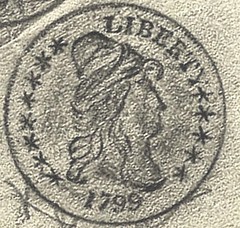
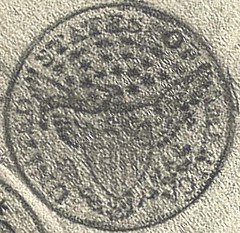
1890 Pencil Rubbing of a Counterfeit Eagle
Continued transcription of the National Archives content reveals additional tidbits, in this case an 1890 letter from A. B. Turner to the U.S. Mint. Turner asks about an 1799 U.S. ten-dollar gold piece, and encloses a pencil rubbing. The piece is described as “silver,” with the weight of a ten-dollar gold coin. If truly silver in appearance, the piece might been a counterfeit with the outer coating worn off. The Mint appears to have responded that the piece had no premium value beyond the gold content, valued at $10.60 (the Coinage Act of 1834 effectively decreased the weight of the ten-dollar piece from 17.5 to 16.718 grams). This was spot on – a 1799 eagle sold for $10.60 in the R. Coulton Davis sale (January 1890), conducted by New York Stamp and Coin.
While the Mint correctly appraised the value of a genuine 1799 gold eagle, they failed to recognize that the coin rubbing was that of a counterfeit. Of course, they did not have the excellent Bass-Dannreuther reference on early gold varieties at hand. Dannreuther identifies nine varieties of the 1799 eagle, none of which match the date style here, which presents a second 9 that is tilted toward the right. Thanks to Dennis Wierzba for catching this. Dennis further points out a contemporary presentation of a 1799 counterfeit ten, in Woodward’s Randall sale (6/29/1885, lot 1253).
Link to National Archives & Records Administration material on Newman Portal:
https://nnp.wustl.edu/Library/Archives?searchLetter=U
Link to transcribed letter from A. B. Turner:
https://nnp.wustl.edu/library/book/586807
Link to R. Coulton Davis sale on Newman Portal:
https://nnp.wustl.edu/library/auctionlots?aucCoId=26&auctionId=513827
Link to Randall sale on Newman Portal:
https://nnp.wustl.edu/library/auctionlots?aucCoId=29&auctionId=511254
VIDEO: WILLIAM & ELIZABETH WISSLEAD
These are selections from the David Lisot Video Library that feature news and personalities from the world of coin collecting. David has been attending coin conventions since 1972 and began videotaping in 1985. The Newman Numismatic Portal now lists all David’s videos on their website at:
https://nnp.wustl.edu/library/multimediadetail/522852
This one's an interview with William & Elizabeth Wisslead. -Editor
PNG Living History: William and Elizabeth Wisslead August 24th 1988. VIDEO: 12:00.
Sponsored by the Professional Numismatists Guild. David Lisot, Interviewer.
 On August 24, 1988 while working at the Financial News Network in Santa Monica, California David Lisot interviewed numismatic couple Bill and Elizabeth Wisslead, They have been involved in coin collecting since the 1950’s. They share their stories of coin organizations like the American Numismatic Association, COIN, and Numismatic Association of Southern California. They talk about William Yeoman, Abe Kosoff, Maurice Gould, and other well known numismatists. They both share what is the essence of collecting.
On August 24, 1988 while working at the Financial News Network in Santa Monica, California David Lisot interviewed numismatic couple Bill and Elizabeth Wisslead, They have been involved in coin collecting since the 1950’s. They share their stories of coin organizations like the American Numismatic Association, COIN, and Numismatic Association of Southern California. They talk about William Yeoman, Abe Kosoff, Maurice Gould, and other well known numismatists. They both share what is the essence of collecting.
An excerpt of the video is available for viewing on the Coin Television YouTube Channel at:
https://youtu.be/IbDxBrkWzqM
THE BOOK BAZARRE
NOTES FROM E-SYLUM READERS: AUGUST 16, 2020
Abner Kreisberg
Regarding Abner Kreisberg
Martin Kaplan writes:
"I was in college in Southern California in the mid 1960s. I bought a few coins from Jerry Cohen. I never spoke to Mr. Kreisberg but saw him sitting behind his desk in the shop. What a long time ago!"
To read the earlier E-Sylum article, see:
VIDEO: ABNER KREISBERG INTERVIEW
(https://www.coinbooks.org/v23/esylum_v23n32a06.html)
1967 San Francisco Assay Office Video
Dave Lange writes:
"I was examining a video archive of San Francisco Bay Area news stations and came across a 1967 report on the San Francisco Assay Office. It includes a scene of the special mint sets being made and packaged. Note that the reporter calls it the "San Francisco Mint," which is only natural. It didn't regain that title until 1988."
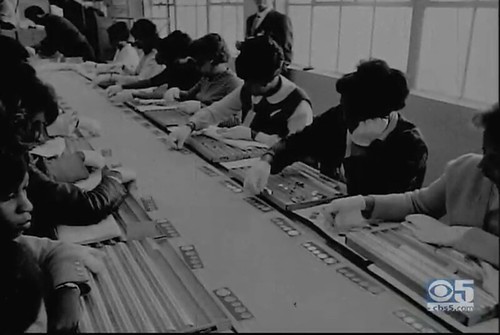
Thanks! Check it out. -Editor
To watch the video, see:
San Francisco New Mint
(https://diva.sfsu.edu/collections/sfbatv/bundles/191503)
Mayflower 400
Unsure of a link in a Coin World article referenced last week, I reach out to the author, Jeff Starck. -Editor
"Turns out the link is: https://www.mayflower400uk.org/ . I will have the Coin World story updated."
To read the earlier E-Sylum article, see:
ROYAL MINT COMMEMORATES MAYFLOWER 400TH
(https://www.coinbooks.org/v23/esylum_v23n32a24.html)
To read the updated article, see:
Royal Mint releases Mayflower anniversary £2 coins
(https://www.coinworld.com/news/precious-metals/royal-mint-releases-mayflower-anniversary-2-pound-coins)
Matte Proof Cents Thrown Into the Trash
Dave Bowers shared this great (but sad!) story with me by email earlier this week, -Editor
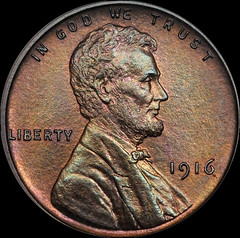 In 1967 I was at Paramount International Coin Company in Englewood, OH, north of Dayton.
In 1967 I was at Paramount International Coin Company in Englewood, OH, north of Dayton.
I was in charge of buying. Fred Vollmer (still active today) had a bunch of Matte Proof cents for sale—many duplicates, dozens altogether. We agreed on a price.
The package arrived, and someone on staff took off the multiple paper wrappings on the outside of a coin box and spread the contents out for me to see.
I looked them over, found them to be of beautiful quality, and sent a check to Fred.
Fred then called and said that I had paid for only part of the shipment.
How could that be?
Fred checked at his end and found that a clerk had put the cents in a long cardboard box and had sealed it. Then it was found that some had been left out, so the clerk spread them out on top of the wrapped box and added other layers of wrapping paper. When the box arrived the clerk at my end threw away the wrappings and gave me the cents.
Somewhere in a solid waste facility north of Dayton some Matte Proof cents probably remain today. Fred and I discussed the loss and each of us agreed on a compromise settlement.
Nostalgia!
Wow! Quite a shame, but as they say, "Stuff happens." Do readers have other tales to share about the unfortunate loss of numismatic material. -Editor
For more information, see:
Matte Proof Lincoln Cents 1909-1916
(http://www.lincolncentresource.com/Matte_Proofs.html)
More on Book Dealer John Jenkins
Mike Marotta writes:
My wife sent me this article about a rare book dealer: "Rather than tweed, he favored white Stetsons and alligator-skin cowboy boots — and sometimes a mink coat. He excelled at high-stakes Texas hold ’em. He took part in an FBI sting at a Queens motel and went to great lengths to exact revenge on enemies. And in 1989 he took a bullet to the back of the head."
Interesting and sad character. See the earlier E-Sylum article for another review of the book. This one's from the New York Post, and has a numismatic connection - coin doctoring. -Editor
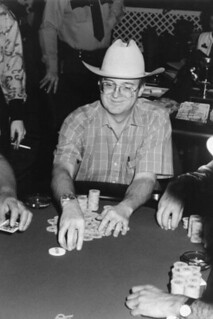 A year earlier, I had trailed Jenkins for a magazine article. I was impressed by his hustle at a book fair and the World Series of Poker. Poker pro “Amarillo Slim” Preston described him as “a sneaky, clever rat.”
A year earlier, I had trailed Jenkins for a magazine article. I was impressed by his hustle at a book fair and the World Series of Poker. Poker pro “Amarillo Slim” Preston described him as “a sneaky, clever rat.”
Jenkins fell into his business as a Texas teen — washing desirable coins so they looked uncirculated and, later, misrepresenting documents supposedly signed by JFK (but actually by Kennedy’s secretary).
“He was a good guy on some levels and a crook on the deepest level,” Vinson told The Post. “He thought of it all as bluffing.”
To read the complete article, see:
Inside the wild double life of rare books dealer John Jenkins
(https://nypost.com/2020/05/02/inside-the-wild-double-life-of-rare-books-dealer-john-jenkins/)
To read the earlier E-Sylum article, see:
NEW BOOK: BLUFFING TEXAS STYLE
(https://www.coinbooks.org/v23/esylum_v23n18a06.html)
Fyre Festival Token
Jeremy Schneider writes:
"I recently came across a "fascinating" numismatic item- the U. S. Marshals Service is auctioning off a token (among other items) from the famed, or better yet infamous "Fyre Festival" that was to happen in the Bahamas in 2017, but completely fell apart- of which Netflix made a very popular Documentary about called Fyre Festival: The Greatest Party that Never Happened. I would be interested to see how these types of items keep their value over time- current auction price of $151."
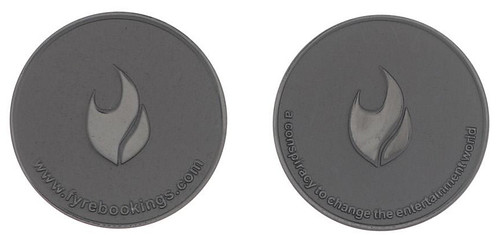
Thanks. Ugly thing, but an interesting tale. It brought $210! -Editor
Jeremy writes:
"I also thought they were quite hideous! "
To read the complete item description, see:
LOT # 51
(https://www.txauction.com/lots/24192)
The British Newspaper Archive
David Powell writes:
"The British Newspaper Archive https://www.britishnewspaperarchive.co.uk/ is a useful source of information for this type of query. This, I think, is the original newspaper report of the event referred to on the medal, although it may be observed that the names do not exactly coincide; newspapers are notorious for misrendering, and I would be inclined on balance to favour the medallist’s interpretation over the newspaper’s. From the Dublin-based Freeman’s Journal of Friday 7 June 1861:"
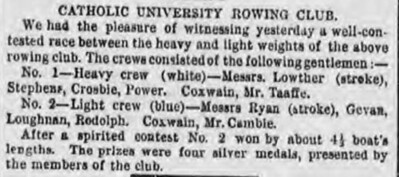
David adds:
"The following article from the Evening Freeman. of Tuesday 27 November 1860 contains some of the same names but is not directly relevant:"
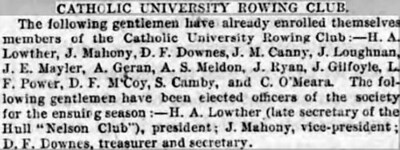
Thanks. Yes, newspapers are horrible at name spelling. My father got a mention once in The Pittsburgh Press, and they labeled his photo "Walter Hommeran." -Editor
To read the earlier E-Sylum article, see:
CATHOLIC UNIVERSITY OF IRELAND ROWING MEDAL
(https://www.coinbooks.org/v23/esylum_v23n32a17.html)
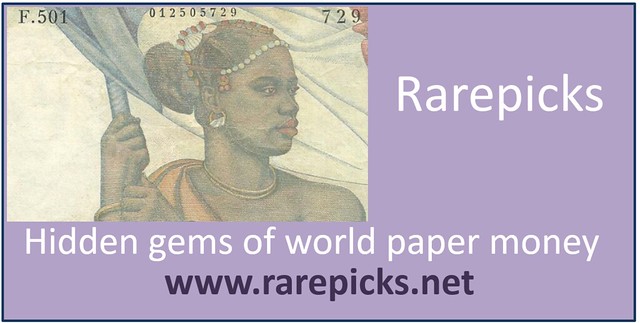
WHITMAN COIN FOLDERS AS COLLECTIBLE ITEMS
Author David Lange published a CoinWeek article August 10, 2020 about Whitman coin folders as collectible items. Here's an excerpt. See the complete article online. -Editor
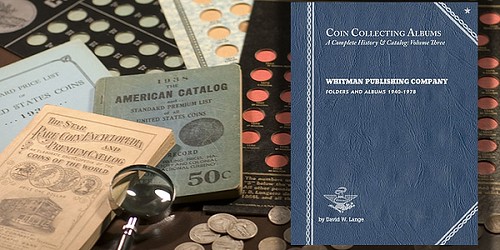
Numismatists have long valued the antique wooden coin cabinets of past generations as collectibles in themselves, particularly when such items can be traced to a prominent coin collector. In more recent years the collecting of early or rare certified coin “slabs” has become quite popular, and the most highly sought examples are frequently worth considerably more than the coins they hold. The next logical extension of such collecting is the very coin storage devices that have been partially superseded by certified grading: coin boards, folders, and albums.
I’ve been a devotee of this activity for many years, and through my books, I’ve been able to draw others to the hobby. The time to secure these items is while they are still affordable—and still in existence.
Every year hundreds of coin folders are tossed into the trash without regard to their age or rarity because so few persons perceive them as having any value beyond sheer utility. The majority of these items were produced by Whitman, and the vast numbers printed have led to the assumption that all will remain common for generations.
I can say with certainty that some are already extremely rare, with a few items still eluding my own collection after decades of searching. I’d like to share just a few of the most desirable Whitman rarities in the hope that readers will begin to see them in a different light.
Whitman was the king of coin board manufacturers from 1935 through 1942, these being the very large single-panel holders that typically measure 11” wide by 14” tall. When rival publishers Dansco and Oberwise began to produce smaller, folding coin panels in 1939-40, Whitman soon joined the bandwagon with its own, improved version of this successful coin holder. Debuting very late in 1940, the now-familiar Whitman blue folders were an immediate hit with collectors. The company continued to dominate this market for decades to come, and in their current design, the Whitman folders remain a very popular product.
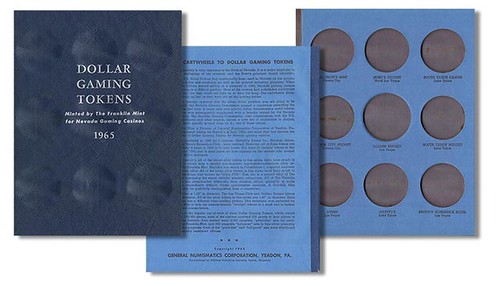
To read the complete article, see:
Whitman Coin Folders as Collectible Items
(https://coinweek.com/coins/supplies/whitman-coin-folders-as-collectible-items/)
To read about Dave's book in an earlier E-Sylum article, see:
NEW BOOK: COIN COLLECTING ALBUMS, VOLUME THREE
(https://www.coinbooks.org/v23/esylum_v23n25a03.html)
WHITMAN NOVEMBER 2020 EXPO IS MOVING
The November 2020 Whitman Coin & Collectibles Expo. originally scheduled for the Baltimore Convention Center, will be moving to a new venue yet to be announced. Here's the press release. -Editor
 The Whitman Coin & Collectibles Expo scheduled for November 12–14, 2020, has been forced to move from the Baltimore Convention Center by Maryland’s ongoing mitigation of the COVID-19 coronavirus pandemic.
The Whitman Coin & Collectibles Expo scheduled for November 12–14, 2020, has been forced to move from the Baltimore Convention Center by Maryland’s ongoing mitigation of the COVID-19 coronavirus pandemic.
Maryland’s COVID-19 mitigation strategies include restricting public access to state buildings, including the Baltimore Convention Center, and controlling the size of public events.
Although the Expo has been forced to move from Maryland and the Baltimore Convention Center, it will still take place, at a venue to be announced. Whitman Expo manager Lori Kraft has issued a “Save the Date” to the hobby community. “We’re working on an alternate show venue,” Kraft said. “Collectors and dealers can count on an Expo event being held November 12–14, 2020. We’ll make an announcement soon with more details.”
Management and staff of the Whitman Coin & Collectibles Expo express their concern for everyone affected by COVID-19. “We’re so thankful for the medical workers who continue to provide front-line care, and for everyone staying safe and looking out for their families and neighbors,” said Kraft.
The new location and a complete schedule of November Whitman Expo activities will be publicized as soon as the venue is confirmed. Updates and news will be posted at expo.whitman.com. Stack’s Bowers Galleries is monitoring the situation and will provide details of its still scheduled November 2020 Auction on their web site, www.stacksbowers.com, as soon as complete details are available.
For updates on COVID-19 in Maryland and elsewhere, visit www.cdc.gov/coronavirus/2019-ncov .
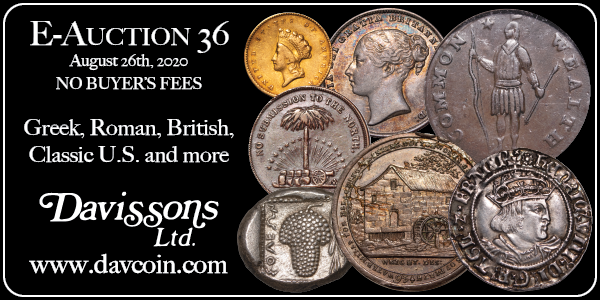
VOCABULARY TERM: MODELING CLAY
Dick Johnson submitted this entry from his Encyclopedia of Coin and Medal Terminology. Thanks. -Editor
Modeling Clay. A soft material used by sculptors to form the model of an intended numismatic or medallic item. It is more than the substance found in nature, although natural clay has been used for three-dimension modeling since ancient times. Modern modeling clay has beeswax or paraffin and oils added to it in formulas closely guarded by the sculptors who originally prepared it (or the companies who now manufacture it). When clay is formulated for professional use by artists it is called plasteline.
The properties of modeling clay are that it remains in a semi-rigid state once it is formed; it is easily molded, it works well with fingers or tools to be altered at will. It must hold a hard surface once the artist is satisfied with the desired shape and be able to make a casting, usually in plaster. Also, it can be used over and over again (provided the most rudimentary care is taken not to contaminate it). When a sculptor’s estate comes on the market his supply of modeling clay is eagerly sought after by other sculptors, it is so nondestructible.
Plasteline is made in four grades of hardness (dyes are sometimes added to color code these grades). The softest is for large sculptures where masses can be formed quickly. The hardest form of plasteline is the most ideal for the relative small mass for coin and medal models, but more importantly because it holds a sharper edge and more precise detail can be molded into its surface.
Modeling clay differs from porcelain clay (which is used only once and is to become the ceramic object being formed). It is possible for porcelain clay to be used for coin and medal modeling but generally a harder clay is more desirable (the difference in the clay and reduction from oversize patterns are two reasons diestruck items can have finer, sharper detail than ceramic ones).
Looking for the meaning of a numismatic word, or the description of a term? Try the Newman Numismatic Portal's Numismatic Dictionary at: https://nnp.wustl.edu/library/dictionary
Or if you would like a printed copy of the complete Encyclopedia, it is available. There are 1,854 terms, on 678 pages, in The Encyclopedia of Coin and Medal Technology. Even running two a week would require more than 19 years to publish them all. If you would like an advance draft of this vital reference work it may be obtained from the author for your check of $50 sent postpaid. Dick Johnson, 139 Thompson Drive, Torrington, CT 06790.

WILLIAM REINHARDT ELLIOTT (1889-1976)
William Reinhardt Elliott (1889-1976) was born on September 6, 1889, at Fremont, Sandusky, Ohio, the son of German immigrants Charles Wilson Elliott (1855-1893) and Frederica Grob Elliott (1855-1930). He was the owner of Elliott's Wonderland, Curios, Coins, Stamps, Indian Relics, 901 West Sandusky Street, Findlay, Ohio.
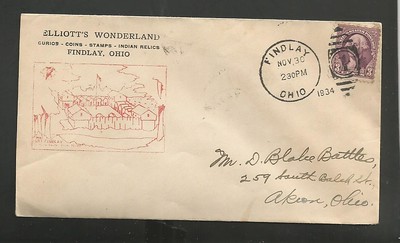
His earliest known career was as a bookkeeper in 1910 for a Motor Works in Detroit, Wayne, Michigan. He then returned to Ohio and worked for the Toledo Post Office since at least 1917 (according to his Draft Card). This developed his interest in collecting stamps, covers and post cards. He then moved to Findlay and worked for the Post Office there. In October 1924 the local newspaper Findlay Morning Republican, ran a story about his reception of a post card mailed from Dresden, Germany that traveled by the famous German Zeppelin ZR-R, that arrived at Findlay in just 5 days making a new world record. The post card was franked by five Zeppelin postage stamps and included ZR-3 markings.
In 1932 he advertised in Hobbies Magazine selling Indian relics : 10 Indian mound beads, 25 foreign stamps. 5 foreign coins, 2 foreign covers, 2 foreign bills, 5 porcupine quills, 10 sea shells, 1 sheet Chinese printing. 5 other Items, our choice.
In 1935, the Republican Courier ran the advertisement for his auction held by Worley Swisher, auctioneer, of his complete inventory of stamps, coins, curios, and antiques. Everything was sold so he could move to California where he was transferred to the Los Angeles Post Office, Los Angeles, California, where he and his family remained the rest of their lives.
After the death of his wife of 49 years, Ina in 1959, he remarried to June Holly Kindle.
He died on April 25, 1976 at Lakewood, Los Angeles, California.
To read the complete article, see:
ELLIOTT, WILLIAM REINHARDT
(http://www.numismaticmall.com/numismaticmall-com/elliott-william-reinhardt)
HARVEY STACK'S NUMISMATIC FAMILY, PART 76
The latest article in Harvey Stack's blog series is about the 1979 silver boom. Thanks. -Editor
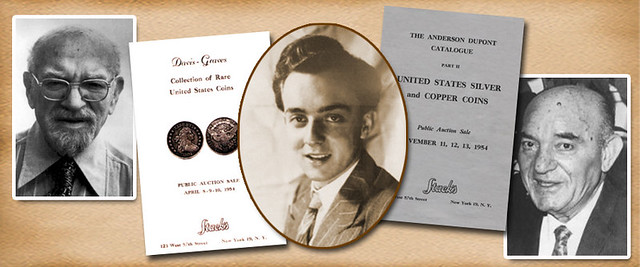
In 1979 several influential things changed numismatics, including precious metal investments, multi-dealer auction events, the slowing of growth in the hobby, the last release of Carson City silver dollars, and several important collections crossing the auction block.
In the economic market one very wealthy Texas oil family tried to corner the market on silver, as the need for silver in electronics, aviation, and other advanced manufacturing caused its value to go up. The Hunt Family of Texas, led by Bunker Hunt, was looking for a way to add to their already immense wealth by cornering the market on a commodity, in this case silver. They had bought up a large amount of silver earlier in the 1970s and stored it in vaults in Switzerland. Then in 1979 they were big buyers again. By the end of the year they owned huge amounts of silver, as well as silver futures and with the price of silver rising, they were raking in the money, as well as more silver. It was said that in 1979, the Hunt Brothers owned over 60% of all the tradable silver in the world.
This trading by the Hunt's had a big influence on silver coins, as the fluctuation in value caused great speculation as the metal was either hoarded or coins, household silver, unused candlesticks, etc., were sold at inflated prices. It was like a wild west at coin dealers, pawn shops and local assayers; as the value increased, so did the price, and so did speculation.
The Hunts traded as if there was no tomorrow. Before 1979, banks accepted for a period the hedging done by the Hunt's using the silver as collateral. But then they started to call the loans, or not renew the contracts, causing a demand on the markets that the Hunt’s had to cover or sell. Within a few months of the "calls" being made, the price of silver went from just over $10 per ounce to almost $50 per ounce. When the Hunts, who controlled such a vast amount at high prices, couldn’t get coverage by the banks or other speculators, the price of silver dropped back to less than $10 per ounce. The speculation on silver by the Hunts caused the family to go bankrupt and had a very negative effect on markets, including the coin market.
This created a quick change in the inflationary trends of the overall economy, and depression like results affected all things – from food to cars to collectibles and, of course, the general economy. The value of numismatic items dropped as fewer of the collectors and investors who had stimulated the growth of numismatics had the funds to continue supporting their hobby.
Yet, though the silver market went down and coin prices dropped, even for gold coins, classic collectors held on to their collections and continued to seek choice and rare items to add to cabinets. Though the market dropped considerably it did not go into a deflationary state.
To read the complete article, see:
Harvey Stack Remembers: Growing up in a Numismatic Family, Part 76
(https://www.stacksbowers.com/News/Pages/Blogs.aspx?ArticleID=Harvey-Stack-Remembers-Part-76)
To read the earlier E-Sylum article, see:
HARVEY STACK'S NUMISMATIC FAMILY, PART 75
(https://www.coinbooks.org/v23/esylum_v23n31a16.html)

CHRISTA MCAULIFFE COIN DESIGN
The Concord Monitor published an article August 9, 2020 about Christa McAuliffe coin design. -Editor
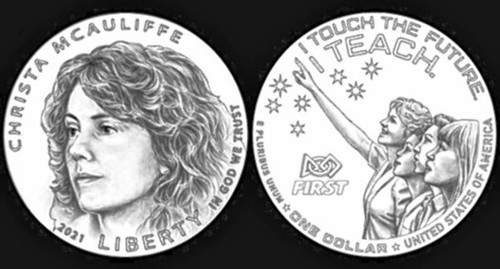
Christa McAuliffe is gazing up and smiling. Three students look with her, their eyes following the direction of her finger pointing to the stars. Engraved above their heads is McAuliffe’s motto: “I touch the future. I teach.”
That image is the favored design for the reverse (tails) side of the Christa McAuliffe Silver Dollar Commemorative Coin, which is scheduled to be released next year to commemorate the 35th anniversary of the NASA Space Shuttle Challenger disaster. That 1986 tragedy took the life of six astronauts and McAuliffe, the Concord High teacher who was selected out of 11,000 applicants to be on board the Challenger as the first teacher in space.
Sen. Jeanne Shaheen introduced and helped pass legislation to create the coin in October 2019. Artists from the U.S. Mint then created multiple designs for the coin that were reviewed by the McAuliffe family, the Citizens Coinage Advisory Committee and the U.S. Commission of Fine Arts. All three groups favored the same designs for the reverse/tails side (described above) and the obverse/heads side, which is a profile portrait of McAuliffe based on a photograph that was taken on Sept. 12, 1985, while McAuliffe was being briefed on the flight suit and personal hygiene equipment she would use onboard the Challenger.
The recommendations from the family, the CCAC and the Commission of Fine Arts have all been sent to the U.S. Treasury Department, which will make the final decisions regarding the coin’s design.
McAuliffe’s inclusion on the Challenger flight was intended to inspire a generation of students to study science. The commemorative coin legislation mandates that the tails/reverse side depicts her legacy as a teacher. The favored tails/reverse design seems to encapsulate McAuliffe’s dual role as inspiration and teacher.
“I think teachers will very much appreciate the reverse design,” Judge Steven McAuliffe, Christa’s widower, told collectspace.com for a June 23 story. “Christa always stressed in her role that she was a representative of teachers. She always understood and stressed for everybody, and appreciated for herself, that she wasn’t singled out for her own personal accomplishments and attributes. She was singled out and chosen to be a representative of classroom teachers, and that is the role in which she reveled.
“So the reverse, depicting her in that teaching role, is significant and very important to us and would be very important to her. The reverse captures what teachers actually do, it shows the relationship with students involved in active teaching.”
That favored design also shows seven stars, which represent the seven people who lost their lives aboard the Challenger – McAuliffe, Dick Scobee, Gregory Jarvis, Judith Resnik, Ronald McNair, Mike Smith and Ellison Onizuka.
“Everyone in New Hampshire remembers where they were on the day of the Challenger disaster,” Rep. Annie Kuster said in a press release in October after the coin legislation passed. “Our nation and the students who were privileged to have Christa McAuliffe as their teacher were heartbroken. Christa was an exceptional person who reached for the stars and inspired her students to do the same. I was honored to join my colleagues to help pass legislation just last year to create a commemorative coin to keep Christa’s pioneering spirit alive as she continues to spark a passion for science and exploration among younger generations.”
The Challenger disaster happened on Jan. 28, 1986, above the Atlantic Ocean off the coast of Cape Canaveral, Fla., as millions of Americans watched on live TV. A faulty O-ring, a design problem that was flagged before the disaster, caused an engine failure that resulted in the Challenger breaking up just 73 seconds after it launched. The shuttle program was shut down for 32 months after the disaster and investigated by the Rogers Commission, which declared NASA’s culture and decision-making processes to be key contributing factors to the accident.
To read the complete article, see:
Proposed Christa McAuliffe coin reaching final stages
(https://www.concordmonitor.com/Proposed-Christa-McAuliffe-coin-reaching-final-stages-35268456)
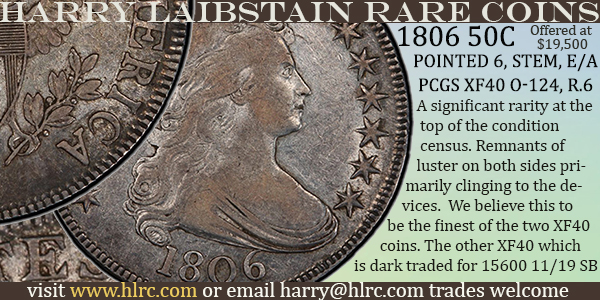
DONALD G. PARTRICK COLLECTION SALES ANNOUNCED
Heritage Auctions is resuming sales of the Donald G. Partrick Collection. Here's the press release. -Editor
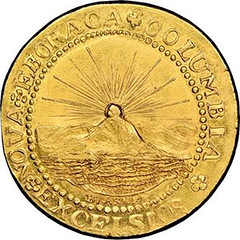
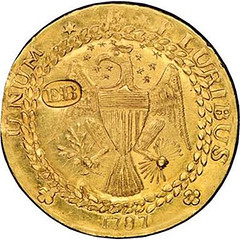
1787 New York-style Brasher Doubloon
Heritage Auctions will offer the Donald G. Partrick Collection in a series of auctions over the next year, making available one of the most historic collections of American colonial coins ever assembled.
Partrick spent five decades diligently acquiring only the finest pieces of American history with the assistance of trusted advisor Jon Hanson, and as a result, his is arguably the most significant gathering of early U.S. colonial coins ever assembled.
“This is a legendary collection assembled by a true numismatic connoisseur with tremendous resources and a great eye that few if any collectors of his day could match," said Heritage Auctions’ Co-Chairman Jim Halperin.
Heritage will hold multiple sales featuring Partrick’s unparalleled collection. Two Partrick Platinum! events are among the sales scheduled: The first will be held in January in conjunction with the FUN Platinum Night Sale and feature colonial rarities, and the second will take place in April in tandem with the CSNS Platinum Night Sale featuring additional colonial rarities and half cents.
“It’s absolutely a thrill to handle this collection – and even a little overwhelming,” said Heritage Auctions Senior Numismatist Mark Borckardt, who in March was named 2020 Numismatist of the Year by the American Numismatic Association. “The Partrick Collection represents the pinnacle of my numismatic career as it pertains to early American copper and colonial coins. I’ve never seen anything better than this.”
In part, that’s because this series of sales will include two Brasher doubloons – including the 1787 New York-style Brasher Doubloon from the Garrett Collection, graded MS65? NGC.
For decades, this has been widely hailed as the finest of all the surviving 1787 Brasher doubloons, of which there are but seven bearing New York gold and silversmith – and George Washington’s neighbor – Ephraim Brasher’s EB counterstamp. This extraordinary coin was rescued in 1848 from the coffers of a New York bullion broker by Salem, Mass., numismatist Matthew Stickney.
This 233-year-old coin has been sold publicly only twice: first at Henry Chapman’s landmark 1907 sale of the Matthew Stickney Collection, and again in November 1979, when Partrick acquired the coin from the sale of the Garrett Collection. Each time, it broke the previous world record for any coin ever sold at auction.
“The New York-style Brasher Doubloon is probably the world’s most famous numismatic rarity. It held the record as the world’s most valuable coin for well over a decade after selling at the November 1979 Garrett Collection auction for the then-astonishing price of $725,000,” Halperin said. “Of course, today, that seems like an incredible bargain.”
Heritage will also offer a Lima-style Brasher doubloon, of which there are but two known examples. As befitting Partrick’s quintessential collection, it is the finest known.
The Lima-style doubloon, dated 1786, was Brasher’s first creation of a circulating gold coin, and he used as his model the 1742-dated eight escudos struck at the mint in Lima, Peru – “a coin that was widely circulated in the U.S. at the time,” Borckardt said
Partrick’s Lima-style Brasher doubloon was discovered in 1914, and has not been publicly offered since it appeared in the Garrett Collection Sale four decades ago.
The Donald G. Partrick Collection series of sales is defined by its highlights, of which there are hundreds.
They include the Finest Uncirculated Silver Getz Pattern of the 1792 Washington Half Dollar, graded MS63 NGC.
These patterns were produced in silver and copper by engraver Peter Getz of Lancaster, Pa. Getz struck these pieces to provide a demonstration of his abilities in the hope of obtaining a coinage contract with the newly established U.S. Mint. But George Washington abhorred the idea of his portrait featured on a coin, deeming it too “monarchical.” That led to the production of only a handful of these silver Washington Half Dollars.
It should come as no surprise that Partrick owned the very finest example.
The series of sales from the Donald G. Partrick Collection will commence with a special monthly auction of Connecticut coppers opening October 2 and closing November 1. It will feature more than 300 different varieties. These were issued under the authority of the State of Connecticut from 1785 to 1788, with more than 360 varieties known altogether.
“And here, we have more than 300, which is an extremely rare accomplishment,” said Borckardt. “Three hundred is the magic number for collectors of Connecticut coppers. If you reach that, you have arrived.”
The sales will also feature more than 1,500 political and merchant tokens dating from the early days of the 19th century, including one of the two known examples of Low-50, the American Silver 25-cent token. There is also a vast selection of counterstamped coins, including a Benjamin Franklin Civil War token obverse stamped on a Draped Bust silver dollar.
Other highlights include:
- 1776 Continental Dollar, VF35, The Romano Silver Example
- Circa 1800 Washington Funeral Medal, MS63, Skull and Crossbones in Gold, GW-71A
- 1789 Non Vi Virtute Vici Copper, MS64+ Brown, The Remarkable Eliasberg Example
- 1774/3 Virginia Silver “Shilling,” Proof 62, From The Garrett Collection
- 1793 Washington Oval Indian Peace Medal From The Brand Collection
It will be one historical rarity after the other throughout the coming months, beginning October 2.
“Everything about the Donald G. Partrick Collection is unprecedented,” said Borckardt. “From the scope and breadth to the quality. It is historic in every aspect, and this is truly a once-in-a-lifetime opportunity.”
To read the complete article, see:
Heritage Auctions to offer the historic, and unparalleled, Donald G. Partrick Collection
(https://www.ha.com/heritage-auctions-press-releases-and-news/heritage-auctions-to-offer-the-historic-and-unparalleled-donald-g.-partrick-collection.s?releaseId=3922)

HARRY LAIBSTAIN LESHER DOLLAR OFFERING
E-Sylum supporter Harry Laibstain Rare Coins is offering a great group of Lesher dollars on their site. For more information, check out Bob Leonard's book, announced in an earlier issue, linked below. -Editor
No Name or Number
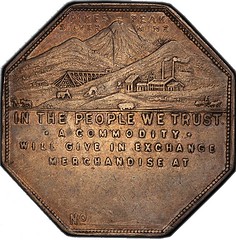
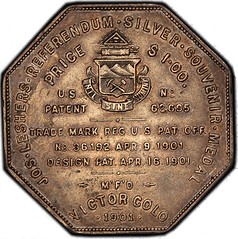
Nice original example of imprint with no name and no number. Only 7 coins graded this variety at PCGS. We sold this coin in 2012 for 3750. This is the only one of 7 to have CAC. 19006 (TV)
To read the complete item description, see:
1901 LESHER IMPRINT WITHOUT PCGS XF45 CAC
(http://hlrc.com/Inventory/CoinViewer?id=870042006&c=23)
Boyd Park With Number
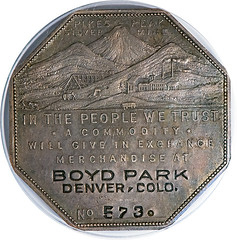
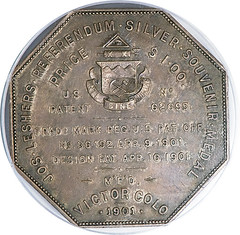
From an original mintage of about 150, some 60 are known. The name sake of this issue was a jeweler in Denver, Colorado. The issue comes with and without numbers. Only 4 of the 15 graded by PCGS are CAC. Greysheet bid/ask at 3300/4120. 19012 (FP)
To read the complete item description, see:
1901 LESHER BOYD PARK WITH # PCGS AU58 CAC
(http://hlrc.com/Inventory/CoinViewer?id=870042001&c=23)
Boyd Park Without Number
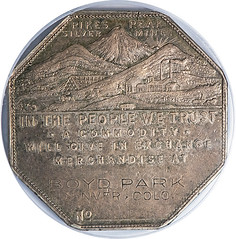
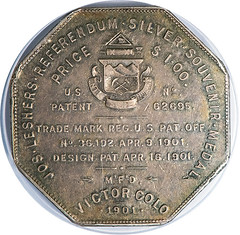
Choice example for the grade. Only 7 examples of this scarce variety graded by PCGS in all grades. This the only one with a CAC sticker. A 53 non cac sold 3960 12/19 with CU for 53 @ 4500. No data for AU50. Trades are too infrequent. 19013 (FP)
To read the complete item description, see:
1901 LESHER BOYD PARK WITHOU PCGS AU50 CAC
(http://hlrc.com/Inventory/CoinViewer?id=870042007&c=23)
Sam Cohen

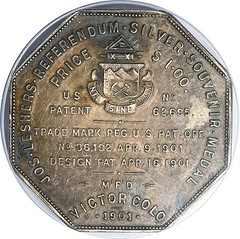
Very scarce with Cohen namesake. This example is well detailed and appears undergraded. The only recent auction result is a non cac 50 which brought 9,900 8/19. A real find for the specialist. 19008 (FP)
To read the complete item description, see:
1901 LESHER SAM COHEN PCGS AU55 CAC
(http://hlrc.com/Inventory/CoinViewer?id=870042014&c=23)
D. W. Klein
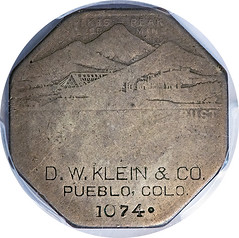
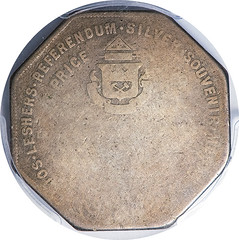
Rare Klein namesake has just one result at public auction and that for an NGC 61. Only 7 survivors making this a high R7. This one likely carried as a pocket piece is truly a find. Previous owner paid 6000 and said was the only one he found in over ten years of searching. 19009 (FP)
Author Bob Leonard adds:
"A few comments: for Boyd Park, original mintage is likely to be much higher than 150 (Wilde's estimate); Lesher told Zerbe in 1914 that Park sold between 500 and 1,000 pieces, and Zerbe quoted Denver people as seeing "hundreds" in Park's show window. However, most of these must have been melted when sales dropped. My current count for Boyd Park is 66 total, 45 of which are numbered (none of Laidstain's pieces are new discoveries).
"For David Klein, he told Zerbe in 1914 that he had purchased 300 from Lesher. Since this is incompatible with the rarity of his named pieces, I assumed (Forgotten Colorado Silver, pp. 101-02) that 200 of these were supplied blank, leaving Wilde's estimate of 100 named pieces intact. My count is 15 pieces, one of which has his name engraved, not stamped; it might be a pattern for the stamp maker (or a fake made to fool collectors). (As an aside, Klein is buried in the Garden of Shalom section of Hollywood Forever Cemetery, the last resting place of Rudolph Valentino, Mickey Rooney, and many other Hollywood stars.)
"A hoard of 17 Klein pieces remains to be discovered (Forgotten Colorado Silver, p 48, the "Lost Coffee Can Treasure"). The late Richard Hartzog was on the trail of this, but did not make much progress before he died. Good Luck!"
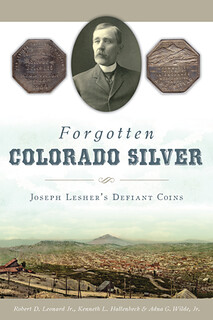 To read the complete item description, see:
To read the complete item description, see:
1901 LESHER DW KLEIN PCGS AG03 CAC
(http://hlrc.com/Inventory/CoinViewer?id=870042011&c=23)
To read the earlier E-Sylum articles, see:
NEW BOOK: FORGOTTEN COLORADO SILVER
(http://www.coinbooks.org/v20/
esylum_v20n25a03.html)
BOOK REVIEW: FORGOTTEN COLORADO SILVER
(https://www.coinbooks.org/v20/
esylum_v20n29a05.html)
BOOK REVIEW: FORGOTTEN COLORADO SILVER
(https://www.coinbooks.org/v22/
esylum_v22n04a07.html)

NUMISMAGRAM MEDAL SELECTIONS: AUGUST 2020
Jeremy Bostwick at Numismagram recently added 24 lots of European art medals and plaques—along with a few other interesting pieces of exonumia—to his website. In addition to the pieces below, various topics are represented, such as World War I, sports, exploration, soaps and perfumes in Sweden, even Halley's comet. Please visit numismagram.com/inventory for all of these new additions, and check back later this month for a small selection French biographical medals of rather interesting historical figures. -Editor
Gordon Bennett Cup Silver Award Medal
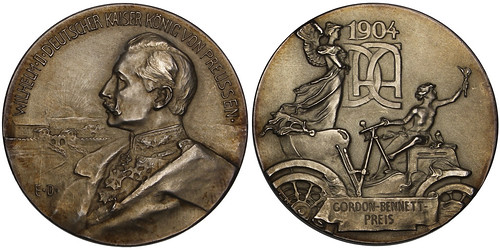
101180 | GERMANY. Gordon Bennett Cup silver Award Medal. Issued 1904 for the 342-mile race near Bad Homburg vor der Höhe (33mm, 16.97 g, 12h). By L. C. Lauer in Nürnberg. WILHELM • II • DEUTSCHER KAISER KÖNIG VON PREUSSEN •, bust of Wilhelm left; in background, rising sun over cityscape of Bad Homburg / Date above DAC monogram (Deutscher Automobilclub); Genius, holding torch, driving antique automobile right; to left, Victory standing right at back of auto. Edge: SILBER 0,990. Wurzbach 9694. Choice Mint State. Pleasing argent surfaces, with some golden-russet toning near the peripheries and a great matte nature. Great early automotive type. $365.
The 1904 Gordon Bennett Cup, formally styled as the V Coupe Internationale, was an automobile race run on 17 June 1904 around the Taunus mountain range north of Frankfurt. As the 1903 race winner was from Germany, the privilege of hosting the 1904 race fell to that country, with Kaiser Wilhelm II suggesting this mountain range. The course, nearly 80 miles in length, hosted four laps, with the eventual winner—Léon Théry of France—beating a field of 17 other drivers hailing from six countries, all with an 11 minute margin of victory.
I like it! -Editor
To read the complete item description, see:
101180 | GERMANY. Gordon Bennett Cup silver Award Medal.
(https://www.numismagram.com/product-page/101180)
1911 Dresden Masonic Bronze Plaque
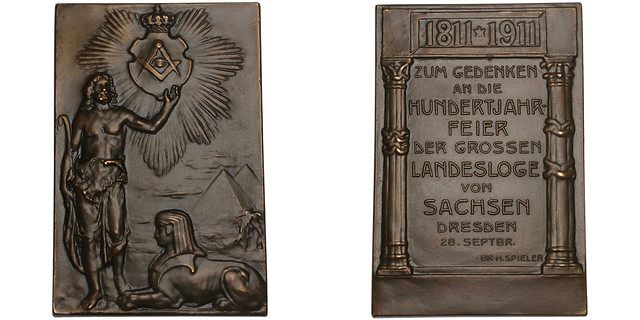
101263 | GERMANY. Dresden. Masonic bronze Plaque. Issued 1911 for the 100th anniversary of the founding of the Grand Lodge of Saxony (39x59mm, 58.28 g, 12h). By H. Speiler. St. John the Baptist standing slightly right, holding crozier and raising hand; to right, Sphinx left; in background, crowned and radiant Masonic arms above the pyramids / ZUM GEDENKEN / AN DIE / HUNDERTJAHR– / FEIER / DER GROSSEN / LANDESLOGE / VON / SACHSEN / DRESDEN / 28 SEPTBR in ten lines; all between Doric (strength) and Corinthian (beauty) columns. Edge: Plain. Choice Mint State. Pleasing brown surfaces, with a few minor spots of red corrosion. A scarce and interesting masonic type. $245.
The Grand Lodge of Saxony was formed in 1811 in Dresden, with it reaching a peak membership of 7,200 freemasons in 1930. Just five years later, it was dissolved on account of increasing pressure placed upon the chapters by the Third Reich's Gestapo and SS.
To read the complete item description, see:
101263 | GERMANY. Dresden. Masonic bronze Plaque.
(https://www.numismagram.com/product-page/101263)
1714 Holy Roman Empire Treaty Medal

101215 | HOLY ROMAN EMPIRE & FRANCE. Karl VI and Louis XIV tin Medal. Issued 1714. Commemorating the Treaties of Rastatt and Baden, as well as the end of the War of the Spanish Succession (48mm, 36.70 g, 12h). By G. Vestner. FEL • TEMP • REPARATIO / CAROLVS VI • D • G • ROM • IMP • ET LVD • XIIII • D • G • FR • ET NAV • REX •, laureate, draped, and armored busts of Karl and Louis facing one another / HIS IVNCTIS IVNGITVR ORBIS (the world is joined by those adjoining), crowned Jupiter (Karl), with eagle bearing thunderbolt, and radiant Apollo (Louis), with lyre and bow, placing between them a drapery over the globe split from the ravages of war; the split runs vertically down western Europe, dividing GALLIA (France) and GERMANIA (the Holy Roman Empire); in three lines in exergue, VNA DVOS ITERATA DEOS / CONCORDIA STRIN / GIT (a renewed harmony is drawn together by the two gods). Edge: Plain. Bernheimer 50; Pax in Nummis 473; cf. Julius 1242 (silver); cf. Montenuovo 1432 (same); Montagu II 666 (same); van Loon V, pp. 244-5 (metal unspecified). Choice Mint State. Exceedingly lustrous and brilliant, with highly mirrored fields and some frosting to the devices; a few light, unobtrusive hairlines are mentioned for completeness. A very rare and interesting medal, especially in tin; typical copper plug intact. Compare to similar pieces in silver—such as Künker 105 (27 September 2005), lot 2783; Künker 232 (17 June 2013), lot 348; and Peus 424 (15 May 2019), lot 829, which realized respective hammers of €9,100, €6,500, and €5,000 [all before buyer's fees]. $1,795.
The War of the Spanish Succession stemmed from the death in 1700 of the childless Carlos (Charles) II of Spain. Owing to the nexus of power presented by the Spanish throne, namely control in parts of Italy, the Spanish Netherlands, and vast territories in the New World, it offered great strategic importance. On account of the Habsburg familial ties to the Holy Roman Empire, it also presented a potential shift in the European balance of power. The deceased Carlos had named Philippe of Anjou as his successor, who ultimately agreed to the throne. The remainder of Europe, however, including the Holy Roman Empire, England, and the Dutch Republic, opposed this proclamation, with war breaking out among the various realms. Ultimately, the conflict changed little, as nothing decisive occurred through the hostilities, and the respective powers sought an end to the conflict, first at the Treaty of Utrecht in 1713, then at the Treaties of Rastatt and Baden in 1714. Philippe would stay as king of Spain (as Felipe V), though he renounced any future French claims for himself or his successors. Additionally, Spain ceded some of her Italian possessions while retaining those in the New World. England garnered recognition of the Hanoverian line along with a repudiation of the Jacobite cause in France. The Holy Roman Empire saw a decrease in overall expanse from her heyday a little over a century prior; as such, her attention turned to her southern borders and increasing conflicts with the Ottoman Empire.
Regarding this medal, a further point of interest is in the artistry itself, with Emperor Karl being depicted as Jupiter and French King Louis (the sun king) as Apollo—a great nod to the classics with respect to the two power brokers of the conflict.
Great medal! -Editor
To read the complete item description, see:
101215 | HOLY ROMAN EMPIRE & FRANCE. Karl VI and Louis XIV tin Medal.
(https://www.numismagram.com/product-page/101215)
Russian Coin Purse
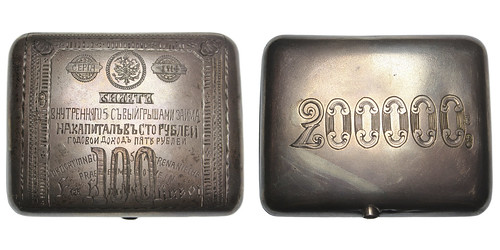
101283 | RUSSIA. Silver Coin Purse. Issued circa 1900. Engraving imitating 5% interest bearing 100 ruble note (71x57mm, 87.40 g, 12h). By "??." All elements engraved: imperial double eagle seal between two smaller seals reading "???I?" and "IN÷;" below, "?????? / ??????????? 5 ?? ?????????? ????? / ?? ???????? ?? ??? ?????? / ??????? ?????? ???? ??????" (ticket for a 5% domestic loan valued at 100 rubles and an annual increase of 5 rubles) in four lines; below, corrupted German intended to read "OBLIGATION DER ZWEITEN RUSSISCHEN 5% INNEREN ANLEIHE / MIT PRAEMIEN–VERLOOSUNGEN / Ein Hundert Rubel;" stylized "100" behind corrupted German text and script; pseudo-legend border around / Ornate "200000." Hallmarks: "??" and "84 silver" on each side. Overall, choice extremely fine. Lightly toned. Still in working order, with complete inner lining intact and three separate pouches for holding coins. Quite rare, especially this attractive, and a very interesting numismatic and notaphilic piece of art. $795.
Monetary changes in the mid-1890's resulted in an influx of gold coinage into the Russian economy—a shift for a population that had grown accustomed to fiat for larger transactions. As such, the usage of both gold and silver coinage in transactions became a more ubiquitous aspect of life around the turn of the century. Owing to this influx of hard currency, a more convenient manner of carrying change became necessary, thus creating the usefulness of coin purses (??????). Since they were now en vogue, various silversmiths tried their hand at creating a product for the consumer, with one design in particular becoming rather popular with the Russian populace.
Mimicking the layout of a loan "ticket" from 1864, these silversmiths engraved iconography that had the appearance of paper currency, though these "notes" from the past were actually bonds meant to raise funds for the completion of the vital rail line between Moscow and the Black Sea. Over time, the tickets would earn their bearer additional funds, but to add more intrigue and excitement, winning serial numbers were drawn twice per year, giving the bearers a chance to earn many times what they could expect during the normal duration of the bond. The largest such prize was some 200,000 rubles, accounting for the "200,000" on the reverse of this coin purse. In essence, these purses were meant to capture the desire of the bearer winning—against all odds—a lottery that could see them become instantly rich.
Unusual - a neat paper money crossover item. -Editor
To read the complete item description, see:
101283 | RUSSIA. "5% interest bearing 100 ruble note" silver Coin Purse.
(https://www.numismagram.com/product-page/101283)
William McKinley silver Repoussé Badge.
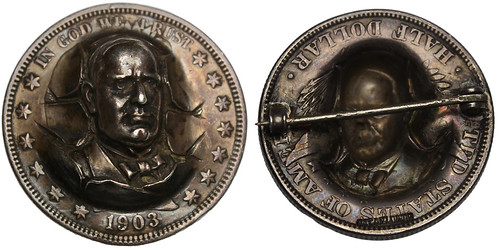
101276 | UNITED STATES William McKinley silver Repoussé Badge. Issued circa 1912 on a 1903-dated Barber Half Dollar (30mm, 13.03 g). Pop-out facing head of McKinley in place of the head of Liberty. Edge: Reeded, with pin attached. Stump –. Pop-out & host coin: Choice Extremely Fine. Pleasantly toned. A great piece of numismatic ephemera from the early 20th century. $495.
"Repoussés" are an interesting form of coin art appearing in the early part of the 1900’s. The host coin was heated to a very high temperature, thus softening the metal and making it a candidate for "re-punching." Dies with a facing (usually) head of some kind would take the place of the original device on the obverse, with an incuse version of this obverse design now evident on the reverse. The result would offer a tremendous 3-D effect, whereby the face on the coin was seemingly bursting out of the piece. In reality, the process was simply an update of the bracteates that used to circulate in areas such as medieval Germany and Switzerland—the coins merely having an obverse design, with the reverse being an incuse, inverted version of the obverse. In the case of this piece, the McKinley "pop-out" was likely issued during one of Theodore Roosevelt's presidential campaigns—possibly that of 1912 when he ran under the third party Bull Moose ticket—for which these could have served as political badges. Roosevelt was McKinley's vice president, who succeeded him upon McKinley's assassination in Buffalo in 1901.
Great item, perhaps manufactured by the August Frank company. -Editor
To read the complete item description, see:
101276 | UNITED STATES. William McKinley silver Repoussé Badge.
(https://www.numismagram.com/product-page/101276)

HOLABIRD AUGUST 2020 SALE SELECTIONS
Here are some items that caught my eye in the upcoming August 2020 Great Americana Pow-Wow Auction from Holabird Americana. -Editor
Lot 3300: Kitty Hawk So-Called Dollar
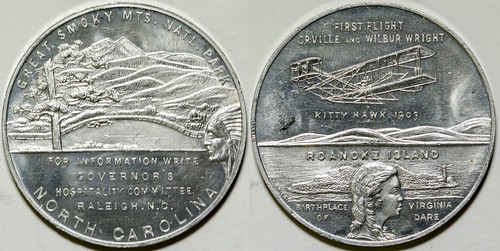
Also birth place of Virginia Dare and Great Smoky Mountains. Rarity - 3.
To read the complete lot description, see:
HK 494 So-Called Dollar of First Wright Brothers Flight at Kitty Hawk, etc. (91114)
(https://holabirdamericana.liveauctiongroup.com/HK-494-So-Called-Dollar-of-First-Wright-Brothers-Flight-at-Kitty-Hawk-etc-91114_i38149328)
Lot 3348: Gutenberg Medal
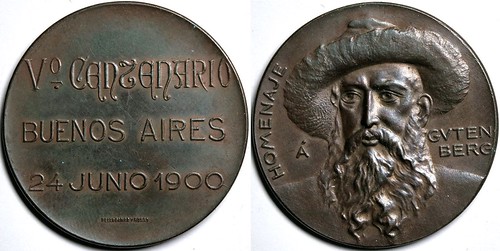
Homenaje / Gutenberg / (portrait) // Vo. Cenzenario / Buenos Aires / 24 Junio 1900. Br. rd., 37 mm.
Nice portrait. -Editor
To read the complete lot description, see:
Gutenberg Medal (121419)
(https://holabirdamericana.liveauctiongroup.com/Gutenberg-Medal-121419_i38149376)
Lot 3355: 1803 Quarter Eagle Kettle Counter
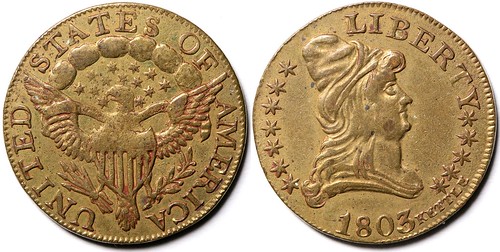
Obv.: Liberty / (bust) / 1803 Kettle; Rev.: United States of America / Eagle, Shield and Stars. Br., rd., 20 mm. There were no 1803 Quarter Eagles issued. These were used as game counters and were struck by the firm of Kettle & Sons in Birmingham, England. Not many examples have survived in the higher grades, and are sought by collectors for their impressive designs that mimic the United States Mint's early gold coinage.
I'm not sure if I have any of these any more, but they make a nice collectible. -Editor
To read the complete lot description, see:
Kettle Copy of 1803 U.S. $2 1/2 Gold Piece Counter (121438)
(https://holabirdamericana.liveauctiongroup.com/Kettle-Copy-of-1803-U-S-2-1-2-Gold-Piece-Counter-121438_i38149383)
Lot 3377: Racketeer Nickel Jewelry Piece
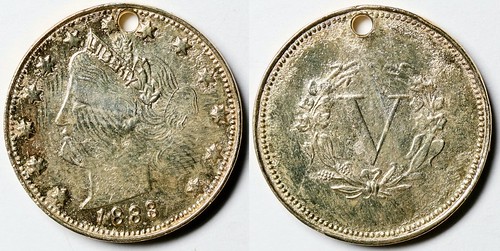
Holed replica of an 1883 Liberty Head nickel gold plated to insinuate a $5 gold piece. A jewelry piece, not a coin.
Interesting item - I'd never seen one of these. It's dated "1888" -Editor
To read the complete lot description, see:
Racketeer Nickel Jewelry Piece (121343)
(https://holabirdamericana.liveauctiongroup.com/Racketeer-Nickel-Jewelry-Piece-121343_i38149405)
Lot 3471: Roost Brothel 5-cent Token
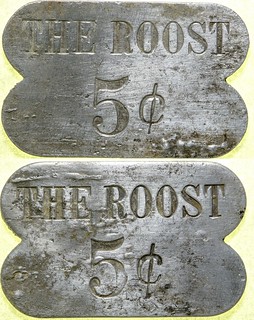
This is a 38x25mm, odd shaped aluminum brothel token from The Roost in Goldfield, Esmeralda County, Nevada. The obverse reads THE ROOST / 5 (cent sign) and the reverse reads THE ROOST / 5 (cent sign).
To read the complete lot description, see:
The Roost Brothel 5-cent Token (101831)
(https://holabirdamericana.liveauctiongroup.com/The-Roost-Brothel-5-cent-Token-101831_i38149500)

NUMISMATIC NUGGETS: AUGUST 16, 2020
Here's a selection of interesting or unusual items I came across in the marketplace this week. Tell us what you think of some of these. -Editor
Mott Token
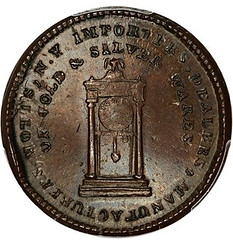
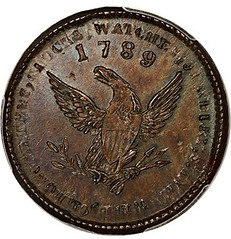
Once believed to be America's first native trade token. This early die state with impressively smooth fields features a rounding of the obverse field is typical of this issue. is An unusually thick Mott token example with die crack extending from the left bottom of the clock. Tied for finest graded by PCGS with just one other coin. CAC approved for quality.
David Lawrence Rare Coins has a nice Mott token in their August 23, 2020 auction. -Editor
To read the complete lot description, see:
1789 Mott Token PCGS/CAC MS62 (Thick Engrailed Edge)
(https://www.davidlawrence.com/rare-coin/1686385)
1838 Victoria Coronation Bronze Medal
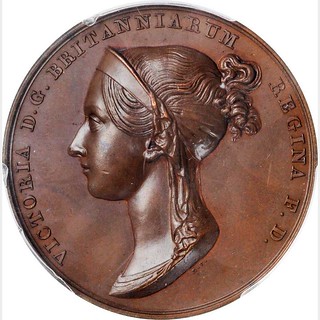
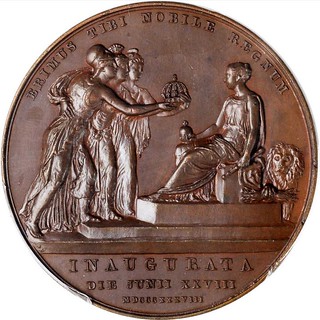
GREAT BRITAIN. Victoria Coronation Bronze Medal, 1838. London Mint. PCGS SPECIMEN-64 Gold Shield.
BHM-1801; Eimer-1315. By B. Pistrucci. Obverse: Draped bust left, wearing bandeau; Reverse: Victoria seated left on throne, holding scepter and orb, and receiving crown from Britannia, Hibernia, and Scotia standing to left; to far right, lion standing facing, with fore paw resting upon thunderbolt. A highly vibrant red-brown specimen, offering a good deal of shimmering brilliance and only a hint of light rub on the highest points.
Provenance: From the Duke of Lansing Collection.
The sale's over, but congratulations to the buyer of this great medal in the August 2020 Stack's Bowers sale. It sold for $660 on a $150-$250 estimate. -Editor
To read the complete lot description, see:
GREAT BRITAIN. Victoria Coronation Bronze Medal, 1838. London Mint. PCGS SPECIMEN-64 Gold Shield.
(https://auctions.stacksbowers.com/lots/view/3-NKDP9/great-britain-victoria-coronation-bronze-medal-1838-london-mint-pcgs-specimen-64-gold-shield)
1839-C Half Eagle
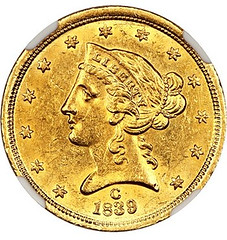
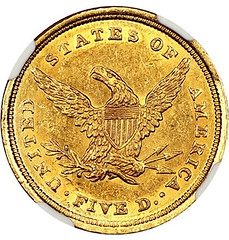
One of just a handful of known uncirculated examples of this very scarce half eagle struck in Charlotte from a mintage of only 17,205 coins. Exceptional surfaces show no singularly distracting marks and gleam with nice yellow-gold luster. Well struck throughout with abundant eye appeal. An exciting opportunity for the advanced collector of Southern gold!
This David Lawrence auction lot caught my eye as well. Nice Charlotte coin. -Editor
To read the complete lot description, see:
1839-C $5 NGC MS62 ex: Milas Collection
(https://www.davidlawrence.com/rare-coin/2120234)
1898 Proof Half Eagle
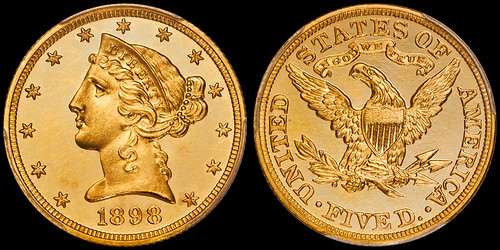
75 Proof half eagles dated 1898 were made for collectors, and it is likely that slightly more than half of these still exist. From a quality standpoint, there are not many half eagles of this design which are better produced than the 1898, making this date very sensible for type purposes. It is interesting to note that the cameo effect seen on 1898 Proof half eagles tends to be deeper than on most other dates of this type.
This is a dazzling borderline Gem which has the overall eye appeal found on many examples of this type which graded PR65. The obverse and the reverse show rich natural medium golden hues with a few specks of deeper color in the lower obverse fields. The depth of the mirrors is quite exceptional, and these offer sharp contrast to the very heavily frosted devices. A few stray hairlines in the left obverse field knock this coin from a higher grade while two small mint-made lintmarks can be seen in the right obverse field.
While we're drooling over nice half eagles, here's a gorgeous piece from E-Sylum supporter Doug Winter. -Editor
To read the complete item description, see:
JUST ADDED - $5.00 - 1898 PCGS PR64+ DCAM CAC
(https://raregoldcoins.com/rare-gold-coin-inventory/just-added-500-1898-pcgs-pr64-dcam-cac)
1940 Ireland Curragh Internment Camp Tokens
Curragh Internment Camp 4-Piece Lot of Uncertified Tokens 1940 XF,
1) brass Penny - Campbell-5550. 27.1mm. 6.23gm
2) brass 6 Pence - Campbell-5551. 27.1mm. 9.02gm
3) aluminum Shilling - Campbell-5552. 27.0mm. 3.42gm
4) aluminum 2 Shilling - Campbell-5553. 27.1mm. 2,93gn
I noticed this set of four tokens in the August 2020 Heritage sale - they're from the Curragh Internment Camp in Ireland. -Editor
To read the complete lot description, see:
Ireland: Curragh Internment Camp 4-Piece Lot of Uncertified Tokens 1940 XF,... (Total: 4 coins)
(https://coins.ha.com/itm/ireland/ireland-curragh-internment-camp-4-piece-lot-of-uncertified-tokens-1940-xf-total-4-coins-/a/232034-63351.s)

PHOTOREALISTIC PORTRAITS OF ROMAN EMPERORS
Not entirely numismatic, but collectors of ancient coins should enjoy this Smithsonian article forwarded by David Sundman about photorealistic portraits of Roman Emperors. John Sallay found the story on Medium and passed it along as well. Thanks! -Editor
John writes:
"One source was Roman coins, especially for the later emperors where marble busts were not available."
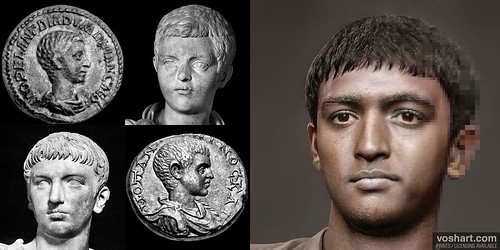
Composite portrait of Diadumenian
Caligula, the Roman emperor best known for his profligacy, sadism, rumored incestuous relationships and unhealthy obsession with a horse, wasn’t exactly handsome. Contemporary accounts are filled with descriptions of the infamous ruler’s misshapen head, ill-proportioned body, enormous feet and thinning hair. Fully aware of his “naturally frightful and hideous” countenance, according to historian H.V. Canter, Caligula—whose favorite phrase was reportedly “Remember that I have the right to do anything to anybody”—often accentuated his off-putting visage by making faces “intended to inspire horror and fright.”
Millennia after the emperor’s assassination in 41 A.D., two-dimensional depictions and colorless marble busts offer some sense of his appearance. But a new portrait by Toronto-based designer Daniel Voshart takes the experience of staring into Caligula’s eyes to the next level, bringing his piercing gaze to life through a combination of machine learning and photo editing.
Per artnet News’ Tanner West, Voshart uploaded his snapshots of stone sculptures to Artbreeder, a generative adversarial network (GAN) that blends images to produce composite creations—in other words, “[T]he tool will combine them together in a sophisticated way to create something that looks … like the two images had a baby.” After several rounds of refining, the artist fine-tuned the likenesses in Photoshop, adding color, texture and other details designed to make the portraits as lifelike as possible.
Crucially, Voshart tells Smithsonian, the project doesn’t claim to offer definitive portrayals of what the emperors actually looked like.
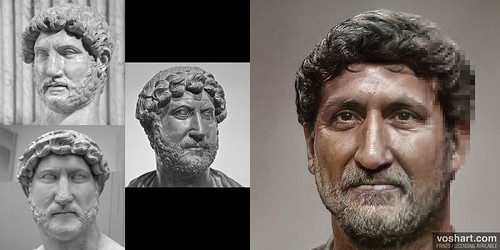
Composite portrait of Hadrian
“These are all, in the end, … my artistic interpretation where I am forced to make decisions about skin tone where none [are] available,” he says.
To determine the Roman rulers’ likely skin tone and hair color, Voshart studied historical records and looked to the men’s birthplaces and lineages, ultimately making an educated guess.
To read the complete Smithsonian article, see:
Peer Into the Past With Photorealistic Portraits of Roman Emperors
(https://www.smithsonianmag.com/smart-news/peer-past-these-photorealistic-portraits-roman-emperors-180975558/)
To read the Medium article, see:
Photoreal Roman Emperor Project
(https://medium.com/@voshart/photoreal-roman-emperor-project-236be7f06c8f)

14TH CENTURY COIN HOARD FOUND IN CZECH REPUBLIC
Here's an interesting chance coin find from the Czech Republic. Found via The Explorator newsletter. To subscribe to Explorator, send a blank email message to: explorator+subscribe@groups.io. -Editor
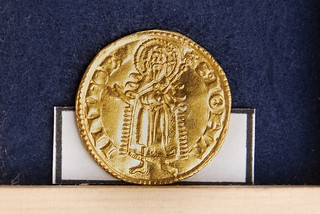 The Museum of West Bohemia in Plzen has announced the discovery of hundreds of silver and gold coins from the 14th century. The treasure, unearthed in a forest near the Kladruby Monastery in the region of Tachov, is believed to be one of the biggest troves of gold coins unearthed on the territory of the Czech Republic.
The Museum of West Bohemia in Plzen has announced the discovery of hundreds of silver and gold coins from the 14th century. The treasure, unearthed in a forest near the Kladruby Monastery in the region of Tachov, is believed to be one of the biggest troves of gold coins unearthed on the territory of the Czech Republic.
The chance discovery occurred already in March, during the coronavirus lockdown, but it was not until this Monday that the museum announced the find to the public. The coins were stumbled upon by a young couple who went on a walk through the forest near the West Bohemian town of Stríbro.
Milan Metlicka is an archaeologist from the Museum of West Bohemia in Plzen:
“As they were walking through the forest, they spotted a few coins, two made of gold and one of silver, lying on the ground. They were probably dug up by some forest animals, most likely by wild pigs.
“There was a large stone protruding from the ground. When they pulled it out, they saw a large amount of gold and silver coins underneath and they immediately called us to announce the discovery.”
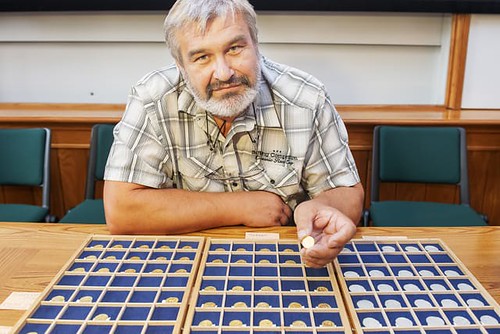
Among the coins are gold ducats bearing the image of the Czech King and Holy Roman Emperor Charles IV, Albrecht of Austria and Rupert of the Palatinate as well as ducats from the Hanseatic city of Lübeck.
“It also contains 343 silver groschen mostly minted in Bohemia during the reign of Charles IV and several groshen bearing the image of John of Bohemia, the Duke of Luxembourg.
“The discovery of the silver groshen is not that unusual. But such a large trove of gold coins is really unique. No such discovery was made in the country in the past 50 years.”
To read the complete article, see:
Valuable 14th century coins found by couple walking in West Bohemia
(https://english.radio.cz/valuable-14th-century-coins-found-couple-walking-west-bohemia-8688913)
FACING BUSTS: ENGLISH KINGS FROM 1351 TO 1526
Allan Davisson published this article via email on August 12th, 2020. With permission we're republishing it here. -Editor
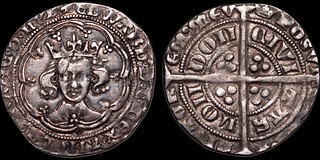 For people with little interest in the series, the medieval portraits of English kings from the reign of Edward III until late in the reign of Henry VII look very much alike when laid out side-by-side. This is apparent when looking at obverse images from each of these reigns on the back cover of our current print catalog and online as lots 93 to 103 in our 36th E-Auction.
For people with little interest in the series, the medieval portraits of English kings from the reign of Edward III until late in the reign of Henry VII look very much alike when laid out side-by-side. This is apparent when looking at obverse images from each of these reigns on the back cover of our current print catalog and online as lots 93 to 103 in our 36th E-Auction.
Discriminating portraits is a substantial area of research and interest for numismatists. The US series of coins has volumes devoted to discriminating dies for such issues as early copper coins (Sheldon) and half dollars (Overton). While milled coinages in the English series show age progression of long-serving monarchs (e.g. Elizabeth II), some portrait sequences like those showing the young head of Victoria feature important distinctions as well. Yet, the English medieval portraits are typically not the basis for definitive attributions in this series. More commonly—after the name of the king— the initial marks at the beginnings of the legends and the lettering and legends themselves are the keys to dating and mint progressions. Yet, the portraiture itself marks major turning points in English coin design.
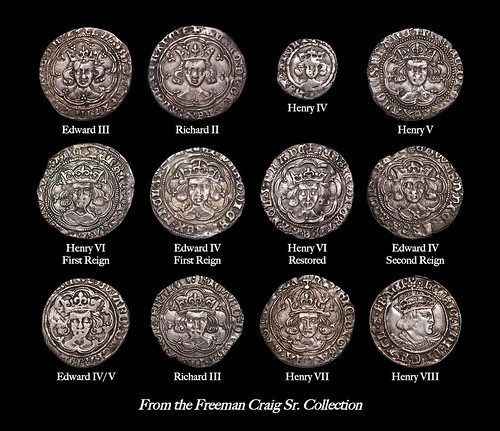
With the hammered coinage series that began with the Fourth Coinage of Edward III in 1351, and ended with the introduction of a Renaissance-inspired portrait of Henry VII with the 1526 Second Coinage of Henry VII, a graver’s tool was required to create the king’s image. This approach replaced the use of punches and a mechanical approach that resulted in an outcome of a simplistic style. (Oman, 1931, a capable historian of English numismatics, called the portraits of that earlier type “inhuman and barbarous.”) This later facing bust with locks of hair flaring out left and right and arches and fleurs (usually) framing the portrait marked England’s growth and expansion for 175 years.
Whether there was a design evolution over this period is debatable. There is an ornateness to the crowns of Henry VII that is not seen earlier, but the facial details are generally similar. Rather than portraiture, most of the research on coinage of this era focuses on legends and lettering.
Yet the nature of the crown, elements of the eyes, aspects of the drapery, additional symbols such as a mullet on the shoulder (Henry V) or symbols in the field or on the breast (Henry VI) provide readily distinguishing characteristics for different issues.
Some of the portraits have an appearance that seems to signal something more than just a basic image like the various busts North notes of Henry V–“emaciated, scowling, frowning.” The nature of the eyes on the portraits varies–sunken dots, missing eyebrows, pronounced arcs above and below; mouths that can vary from small with pursed lips to shapes resembling a leer or a frown. The crowns also vary in many ways—the shape of the fleurs, the number of arches, jewels on the arches.
In time, as you become more and more familiar with this period of English history and English coinage, these portraits begin to express a charm all their own. Oman commented about the full-face of Edward III on the first of his groats that “Why the king did not place a real portrait on this new coin is hard to see. His artist could have produced a very good one, if he had but given the order.”
But “real portraits” were not typical of mid-14th century art, and it is not hard to imagine that a “real portrait” would not have been accepted by a society whose experience with art was still in the early stages of emergence from medieval expression.
(Charles Oman, K.B.E. The Coinage of England. Oxford. 1931)
To view the Freeman Craig Sr. Introduction, and the entire back cover, see:
https://d31a7zxp1oft1z.cloudfront.net/s3fs-public/Back%20cover%20with%20notes.jpg
To browse the Freeman Craig Sr. Collection, see:
https://davcoin.com/sale/E-Auction%2036/craig
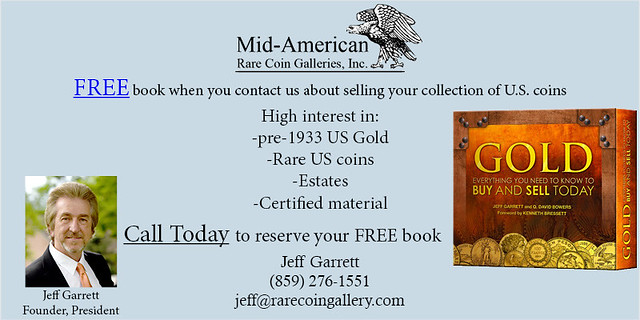
THE STRAWBERRY LEAF CENT NUMISMATIC FISTFIGHT
Alas, this lot was not among my recent consignment to Stack's Bowers Galleries. Selling for $660,000 (including Buyer's Premium), lot 1006 in the August 6th Rarities Night sale was the Parmelee specimen of the legendary 1793 Strawberry Leaf Cent. Thanks to Martin Kaplan for noting the juicy bits of the lot description, describing the famous “numismatic fisticuffs” that erupted over this piece. Here's an excerpt from the description. -Editor
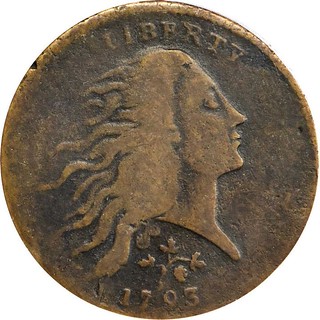
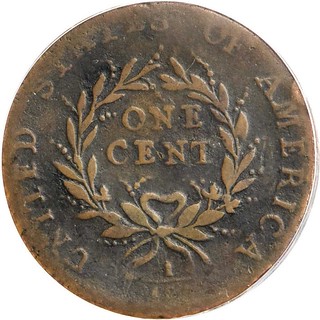
Commentary: A rare prize that we (American Numismatic Rarities) had the privilege of "finding" again after decades out of the numismatic spotlight. Its history, provenance, and certain other pertinent aspects of this great rarity were discussed by John Kraljevich in our (American Numismatic Rarities') sale of the Frog Run Farm Collection in 2004, and the results of the study are included here; we could not have re-invented the description in a finer manner, and so present much of John's original cataloging here, as well in the earlier section of this description.
Among the 295 die varieties of early cents numbered by Dr. William Sheldon, in addition to the 53 varieties so rare he deemed them "non-collectible," no variety captures the imagination of early American copper specialists so much as the 1793 Strawberry Leaf cent. Only four specimens are known, all of which are well worn, a fact that no doubt contributes to the aura of mystery and desirability that surrounds them. The long-unknown whereabouts of the finest known specimen, a coin that is numerically twice as fine as the next best example, only adds to that aura and cachet. That finest known example reappeared in our 2004 Frog Run Farm Collection sale, and now, in 2020, bidders will once again have the opportunity to compete for this numismatic treasure in our current offering of the ESM Collection.
This coin is the Parmelee 1793 Strawberry Leaf cent, untraced from 1941 to 2004 and, prior to the latter year, not offered publicly since 1890. We were delighted in 2004 to be the first numismatic researchers since Sylvester S. Crosby to examine this coin, and we were honored to present it for public sale to collectors for the first time in 114 years. The obverse of this famous coin has been chosen to illustrate the Strawberry Leaf variety in every edition of the Guide Book since 1946, Ed Frossard's 1879 Monograph of United States Cents and Half Cents, issued Between 1793 and 1857, and Sylvester S. Crosby's 1897 The United States Coinage of 1793. The reverse of this coin was likewise illustrated in Crosby's work on 1793s, and both the obverse and reverse are plated in the 2006 edition of United States Large Cents by William C. Noyes.
David U. Proskey was the first to identify the reverse die of the 1793 NC-3 variety, with its distinctive high positioning of ONE CENT, and it was the present coin that served as the discovery specimen. Proskey cataloged this exact example when it was offered as lot 201 in J.W. Scott's sale of October 23 to 24, 1877...
The history of this specimen is nearly as fascinating as the Strawberry Leaf variety itself. After its discovery by Proskey as the first with the high ONE CENT reverse, the piece was purchased at auction by famous Boston bean baker Lorin G. Parmelee (for more on Parmelee, see below). While Parmelee enjoyed "horse trading," this piece was not sold until his entire cabinet was consigned to auction in 1890. It was purchased by another Bostonian, a physician named Dr. Thomas Hall who is best known for his pioneering 1892 work on varieties of Connecticut coppers.
After his death in May 1909, the entire Hall cabinet was purchased intact by Chicago brewing magnate Virgil Brand, including hundreds of colonial coins, large cents, and medals.
See the full lot description online for more background on the history of this specimen. Here's the part Martin pointed out. -Editor
As noted above, the most famous (though perhaps not the most recent) case of numismatic fisticuffs revolved around a specimen of this precise variety. As described in Carl Carlson's superb article for the November 1978 edition of The Numismatist titled "Strawberry Leaves and Shiners," the ANS example of the NC-3 was the root of a physical struggle between two of the most respected dealers of their era: Ed Frossard and Lyman Low. When the Merritt-Haines-ANS specimen was presented for public sale in December 1894 as part of Frossard's 130th auction, for some reason Lyman Low called Frossard a "liar," though what he lied about is not recorded.
Two later recollections of the scene have survived and both describe how Frossard and Low ended up rolling around on the floor until pulled apart by Harlan P. Smith, who lost a diamond stickpin in the fracas. Augustus G. Heaton noted the "two numismatic sages were soon mixed up on a dusty floor in a manner that would have made football adversaries envious of their combative qualities until, in a badly circulated condition, they were dragged apart by dismayed spectators."
Charles Steigerwalt, who sold the piece offered today to Dr. Thomas Hall after the Parmelee sale, noted in a 1911 piece that the Parmelee specimen "described as 'good' was really 'fine' and the best known" and went on in the sale article to state that Frossard and Low "rolled around on the floor of the auction room, trying to kick each other." Notably, Carlson chose to illustrate his article with a photo of this exact specimen, taken from the 1897 Crosby plate.
To read the complete article, see:
1793 Flowing Hair Cent. Wreath Reverse. NC-3. Rarity-8-. Strawberry Leaf. VG-10 (PCGS).
(https://auctions.stacksbowers.com/lots/view/3-NKRTO/1793-flowing-hair-cent-wreath-reverse-nc-3-rarity-8-strawberry-leaf-vg-10-pcgs)

HURRICANE DIANE AND THE 1955 DOUBLED DIE CENT
On August 12, 2020 Dave Bowers published a great little article on Mint News Blog on the backstory of the 1955 Doubled Die cents. -Editor
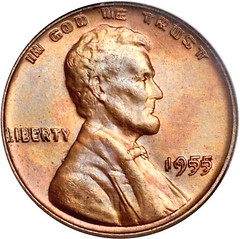
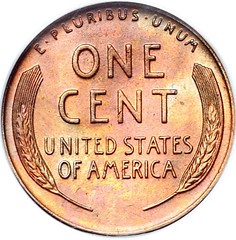
By almost any evaluation the 1955 Doubled Die cent is the most famous die error in the Lincoln cent series. The date and all obverse lettering are dramatically doubled. When these were first noticed by numismatists, Numismatic News called them 1955 Shift cents. Later, Kenneth E. Bressett gave them the Doubled Die name, used in the Guide Book from that time to the present.
As to how the coins were made, years later I inquired at the Philadelphia Mint and learned that on Thursday, August 18, 1955, several presses were coining cents, dumping the coins into a box where they were then collected and mixed with the cents from other coining presses. At the time Hurricane Diane was passing through the East Coast, causing extensive damage. There was confusion at the Mint and elsewhere as no one knew what the weather would bring next.
Late in the afternoon a Mint inspector noticed the bizarre doubled cents and removed the offending die. By that time somewhat over 40,000 cents had been produced, about 24,000 of which had been mixed with normal cents from other presses. The decision was made to destroy the cents still in the box and to release into circulation the 24,000 or so pieces which were mixed with other cents. The Mint had no reason to believe that these would attract attention or have value with collectors. They were simply viewed as defective coins. It is likely that about 3,000 to 4,000 1955 Doubled Die cents exist. All genuine pieces have the reverse die misaligned about 5% from the normal 180º rotation.
Today, in August 2020, this is one of the most highly-desired 20th-century United States coins.
To read the complete article, see:
Bowers on collecting: Blame it on Hurricane Diane!
(https://mintnewsblog.com/bowers-on-collecting-blame-it-on-hurricane-diane/)
WWII AUSTRALIAN COIN TRENCH ART
Numismatic information is where you find it, and sometimes one has to look far and wide. In the August 15, 2020 MPC Gram for collectors of Military Payment Certificates and other military collectibles Kathy Freeland and editor Fred Schwan discuss the 1997 book Lady GI by Irene Brion, recounting her service with the Navy WAACS in the South Pacific as a Japanese codebreaker. -Editor
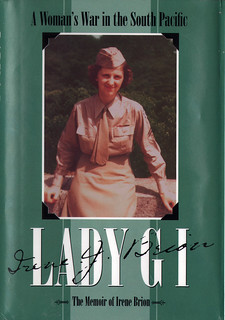 Part of the charm of living in New Guinea, even though the terrain and the area were more rugged, was the opportunity to date a variety of men. Some of them were Aussies that presented her with rings, bracelets and other jewelry made from the Australian coins. Irene says “Coins of various denominations were cut into strips and hammered into tiny links for coin bracelets. Sometimes the coin was hammered carefully over a rounded hard object, probably of carved wood, producing a convex contour that didn’t deface the design or lettering on the coin.” Obviously these were special gifts that Irene enjoyed, along with the male companionship readily available.
Part of the charm of living in New Guinea, even though the terrain and the area were more rugged, was the opportunity to date a variety of men. Some of them were Aussies that presented her with rings, bracelets and other jewelry made from the Australian coins. Irene says “Coins of various denominations were cut into strips and hammered into tiny links for coin bracelets. Sometimes the coin was hammered carefully over a rounded hard object, probably of carved wood, producing a convex contour that didn’t deface the design or lettering on the coin.” Obviously these were special gifts that Irene enjoyed, along with the male companionship readily available.
Fred Schwan discusses the book's references to Japanese Invasion Money and additional details on the coin art, illustrated with examples from his own collection, like this one on an Australian florin. -Editor
"Many of the objects were lovely, especially those made from Australian coins. [Most of these Australian coins were struck in the United States and were by far the most commonly used host coins of the war].
"The silver in those was so pure and soft that it could be cut and hammered easily. For instance, rings were made by cutting a hole from the center of a shilling and tapping it with a mess-kit spoon, a process that was time-consuming but effective. I have a ring that is so carefully formed that the only indication if its origin is hidden on the inside.
"Coins of various denominations were cut into strips and hammered into tiny links for coin bracelets. Sometimes the coin was hammered carefully over a rounded hard object, probably of carved wood, producing a convex contour that didn't deface the design or lettering on the coin.
"I saw several heart-shaped pendants made of melted GI toothbrush handles and mounted with a cutout Liberty head dime. These were suspended from dog-tag chains which could sometimes be purchased in the PX." (Brion page 84-85)
Subscribe to the MPC Gram at:
https://guide.us13.list-manage.com/subscribe?u=10eb366ab80344a56657e0d5d&id=58874b37e1
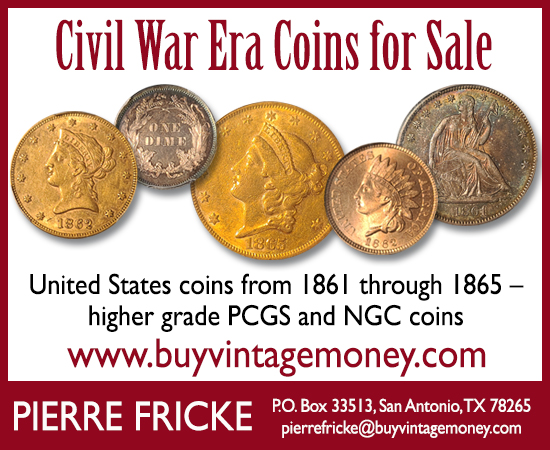
A COUNTERFEIT 1964 KENNEDY HALF DOLLAR
Over on the Coin Talk forum, Kennedy Half collector Ethan posted images of a counterfeit 1964. See the complete thread online. -Editor
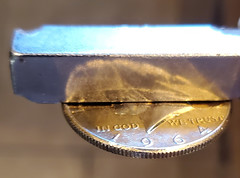 I am a Kennedy Half Dollar collector, and to me this is a breaking point. Why? I know this was purchased through a major dealer of junk silver. Am I upset with them? Nah, they would replace it in a heartbeat. Actually the coin is not mine and I offered $50 for it unseen, now that I have it in hand, the offer went to $100. It is not for sale.
I am a Kennedy Half Dollar collector, and to me this is a breaking point. Why? I know this was purchased through a major dealer of junk silver. Am I upset with them? Nah, they would replace it in a heartbeat. Actually the coin is not mine and I offered $50 for it unseen, now that I have it in hand, the offer went to $100. It is not for sale.
Folks, this is a dangerous thing, over 300 million of these minted, and even they are now being counterfeited. I collected these since I was 10 years old and have never actually been able to put my hands on a fake Kennedy. Magicians coins sure, I have hand searched over $250K dollars of bank rolls and found a lot of great things, but not this.
Even JUNK is not safe now.
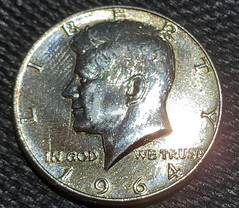
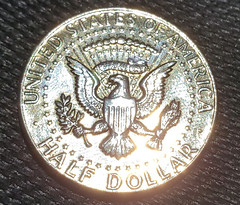
To read the complete article, see:
Counterfeit 1964 Kennedy Half - Finally able to see one..
(https://www.cointalk.com/threads/counterfeit-1964-kennedy-half-finally-able-to-see-one.365106/)
AQUARIUM RAKES IN 14 YEARS WORTH OF COINS
What happens to those coins people drop into waterfalls for good luck? At a North Carolina aquarium, nothing, at least not until a pandemic shutdown opens an opportunity to scoop them up. -Editor
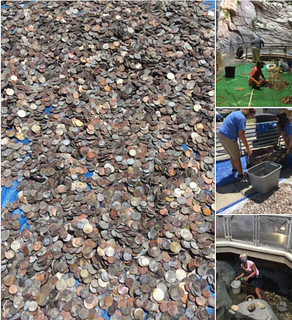 The North Carolina Aquarium at Pine Knoll Shores is definitely not experiencing a coin shortage.
The North Carolina Aquarium at Pine Knoll Shores is definitely not experiencing a coin shortage.
Since the aquarium is still closed to the public under North Carolina Gov. Roy Cooper's executive order amid the ongoing coronavirus pandemic. The staff collected 100 gallons of coins from the bottom of the fountain in five-gallon buckets and said the water feature had not been emptied in almost 14 years.
The aquarium’s Visitor and Member Services coordinator Cindy Meyers said the waterfall was not originally intended to be a wishing well.
“The public decided it should be a wishing well,” she explained, “We decided since we were going to be closed to the public for an extended period that we would shut the waterfall off to save electricity. Since we did that, we could see all the coins in there, and it was really piling up. We decided to drain the waterfall and get in it.“
Meyers says the staff is taking the coins to the bank in portions and so far have cashed in $2,100.
To read the complete article, see:
Aquarium pulls coins from waterfall for the first time in nearly 14 years
(https://abcstlouis.com/news/offbeat/amid-coin-shortage-aquarium-removes-coins-from-waterfall-for-the-first-time-in-15-years)
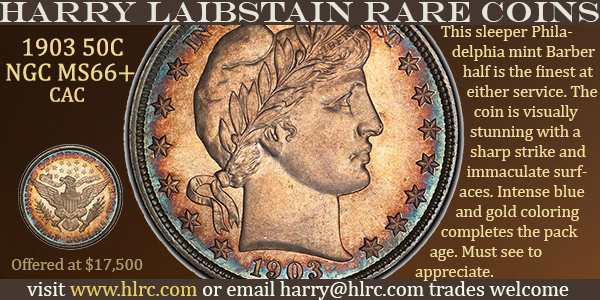
LOOSE CHANGE: AUGUST 16, 2020
Here are some additional items in the media this week that may be of interest. -Editor
U.S. Mint Colorization Contractor Revealed
This is why the hobby needs to support real reporters at real subscription-based publications like Coin World (and not just rely on free internet newsletters like, well, The E-Sylum. Paul Gilkes published an article August 14, 2020 with the results of an investigation into the background of the U.S. Mint's coin colorization feature. Nice work! -Editor
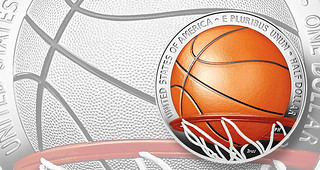 After six months of being stonewalled by the U.S. Mint and the filing of a Freedom of Information Act inquiry, Coin World is finally able to identify the vendor contracted to colorize the reverses of a limited number of 2020 Basketball Hall of Fame commemorative half dollars and dollars, as well as some details of the colorization process itself.
After six months of being stonewalled by the U.S. Mint and the filing of a Freedom of Information Act inquiry, Coin World is finally able to identify the vendor contracted to colorize the reverses of a limited number of 2020 Basketball Hall of Fame commemorative half dollars and dollars, as well as some details of the colorization process itself.
The Mint contract, with a maximum potential value of $8,375,000 was awarded Oct. 9, 2019, to LulaRose, a division of The Clancy Group Corp. in Winchester, Massachusetts.
The contract covers the colorization of specific design elements on the common reverse of the Proof 2020-S copper-nickel-clad half dollar struck at the San Francisco Mint and the Proof 2020-P silver dollar struck at the Philadelphia Mint.
To read the complete article, see:
Coin colorizing company finally confirmed
(https://www.coinworld.com/news/us-coins/coin-colorizing-company-finally-confirmed)
Counterfeiter Louis “The Coin” Colavecchio
An American Numismatic Society Pocket Change blog article by Jesse Kraft earlier this month discusses counterfeiter Louis “The Coin” Colavecchio. -Editor
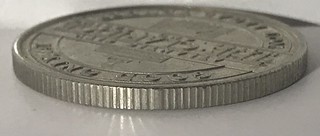 Louis “The Coin” Colavecchio passed away in early July at the age of 78. With a nickname like “The Coin,” one would think that most numismatists would have heard of him, though that’s likely not the case. As it turns out, Colavecchio might be considered one of the worst nightmares for a numismatist. He was a counterfeiter, and a good one too—the self-proclaimed “world’s greatest counterfeiter.” He had been released from Butner Federal Prison in North Carolina just weeks before he passed away in hospice care, suffering from a variety of medical conditions including dementia, chronic obstructive pulmonary disease, hypertension. Though sentenced to 15 months in prison for producing counterfeit $100 bills in August 2019, he had only served eight of those months. United States District Court Chief Judge John J. McConnell Jr. agreed to free him on the time he had served in May, as a last gesture of compassion before his impending death.
Louis “The Coin” Colavecchio passed away in early July at the age of 78. With a nickname like “The Coin,” one would think that most numismatists would have heard of him, though that’s likely not the case. As it turns out, Colavecchio might be considered one of the worst nightmares for a numismatist. He was a counterfeiter, and a good one too—the self-proclaimed “world’s greatest counterfeiter.” He had been released from Butner Federal Prison in North Carolina just weeks before he passed away in hospice care, suffering from a variety of medical conditions including dementia, chronic obstructive pulmonary disease, hypertension. Though sentenced to 15 months in prison for producing counterfeit $100 bills in August 2019, he had only served eight of those months. United States District Court Chief Judge John J. McConnell Jr. agreed to free him on the time he had served in May, as a last gesture of compassion before his impending death.
This time, he was easy to prosecute. He had been bragging to an informant that he could effortlessly counterfeit $100 bills and was capable of besting even the latest security features. In December 2018, the Secret Service raided his home in Pawtucket, Rhode Island and found presses able to produce counterfeit bills that accurately simulated the real deal (including their distinct reaction to ultraviolet light), as well as 2,400 counterfeit $100 bills. Having the damning conversations on recording, he had no choice but to plead guilty. But, this wasn’t the first time he was ever caught.
To read the complete article, see:
DEATH OF A COUNTERFEITER: A REMINDER THAT ALL ASPECTS OF NUMISMATICS ARE SUBJECT TO FRAUD
(http://numismatics.org/pocketchange/counterfeiter/)
To read an earlier E-Sylum article, see:
LOUIS COLAVECCHIO, MASTER COUNTERFEITER
(https://www.coinbooks.org/v23/esylum_v23n29a27.html)
Jay M. Galst (1950-2020)
Moving on the the good guys, here's a New York Times obituary for Jay Galst, who passed away in April. We'd covered this in our April 12, 2020 issue. -Editor
This obituary is part of a series about people who have died in the coronavirus pandemic.
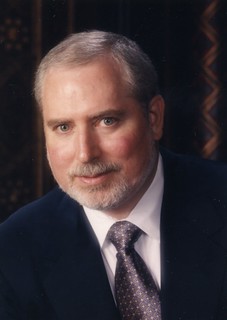 When Dr. Jay M. Galst was a boy in Milwaukee, his father, who owned a grocery, would bring home coins from the day’s receipts, and young Jay would enjoy searching through them for wheat pennies, buffalo nickels and other distinctive finds.
When Dr. Jay M. Galst was a boy in Milwaukee, his father, who owned a grocery, would bring home coins from the day’s receipts, and young Jay would enjoy searching through them for wheat pennies, buffalo nickels and other distinctive finds.
That boy grew up to be an ophthalmologist, and in a happy merging of vocation and avocation, he developed a passion for numismatics that included a singular area of expertise: He may have known more than anyone about coins, tokens, medals and similar artifacts that were in some way related to the eye.
“The last time we were together, back in pre-pandemic February, we were in the A.N.S.’s vault looking through trays and trays of 17th-century British farthing and halfpenny tokens,” Dr. van Alfen said by email, “trying to find an example produced by a London optician who also produced a different token he had just purchased in order to compare the two. I knew very little about 17th-century British tokens before that morning. In the hour it took to find the token, I received a crash course. His pure joy in such numismatic arcana was always irresistible.”
To read the complete article, see:
Dr. Jay Galst, a Specialist in Eyes and Coins, Dies at 69
(https://www.nytimes.com/2020/08/16/obituaries/dr-jay-galst-dead-coronavirus.html)
To read the earlier E-Sylum article, see:
JAY M. GALST (1950-2020)
(https://www.coinbooks.org/v23/esylum_v23n15a12.html)
Sampling DNA From a 1,000-Year-Old Book
While looking for other things I discovered this 2017 Atlantic article about a DNA analysis of the York Gospels. What tales our coin books could tell! -Editor
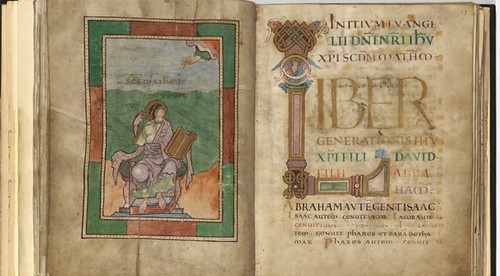
The York Gospels were assembled more than a thousand years ago. Bound in leather, illustrated, and illuminated, the book contains the four gospels of the Bible as well as land records and oaths taken by clergymen who read, rubbed, and kissed its pages over centuries. The Archbishops of York still swear their oaths on this book.
The York Gospels are also, quite literally, a bunch of old cow and sheep skins. Skin has DNA, and DNA has its own story to tell.
A group of archaeologists and geneticists in the United Kingdom have now analyzed the remarkably rich DNA reservoir of the York Gospels. They found DNA from humans who swore oaths on its pages and from bacteria likely originating on the hands and mouths of those humans. Best of all though, they found 1,000-year-old DNA from the cows and sheep whose skin became the parchment on which the book is written.
To read the complete article, see:
Sampling DNA From a 1,000-Year-Old Illuminated Manuscript
(https://www.theatlantic.com/science/archive/2017/08/the-secret-life-of-illuminated-manuscripts-as-told-in-dna/536172/)

